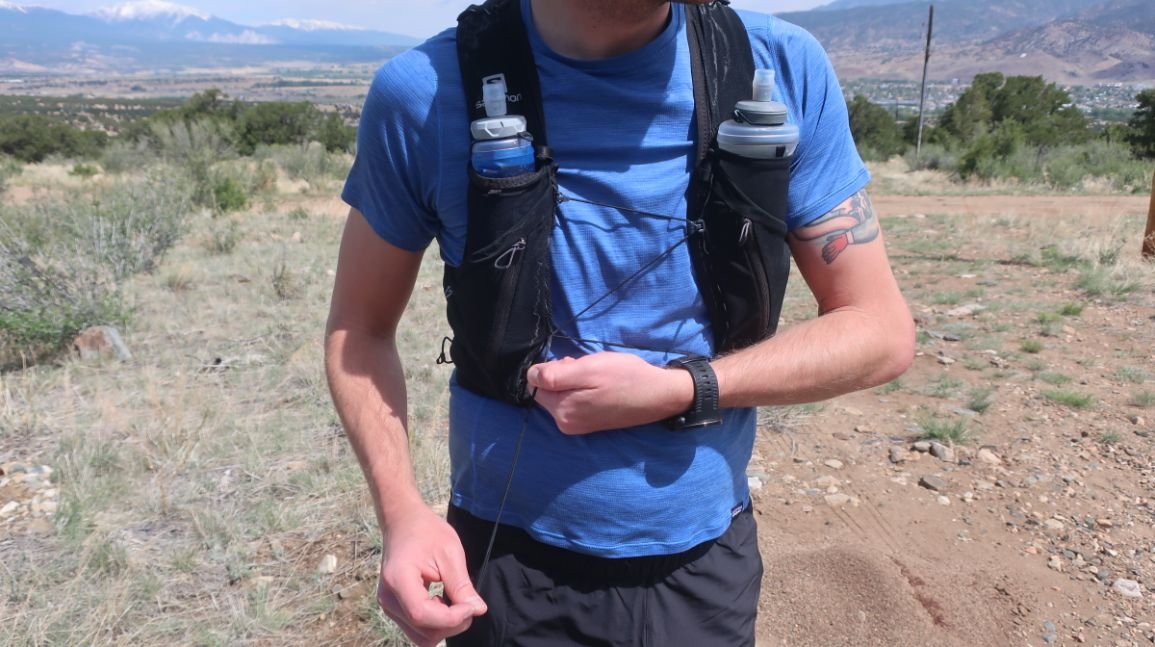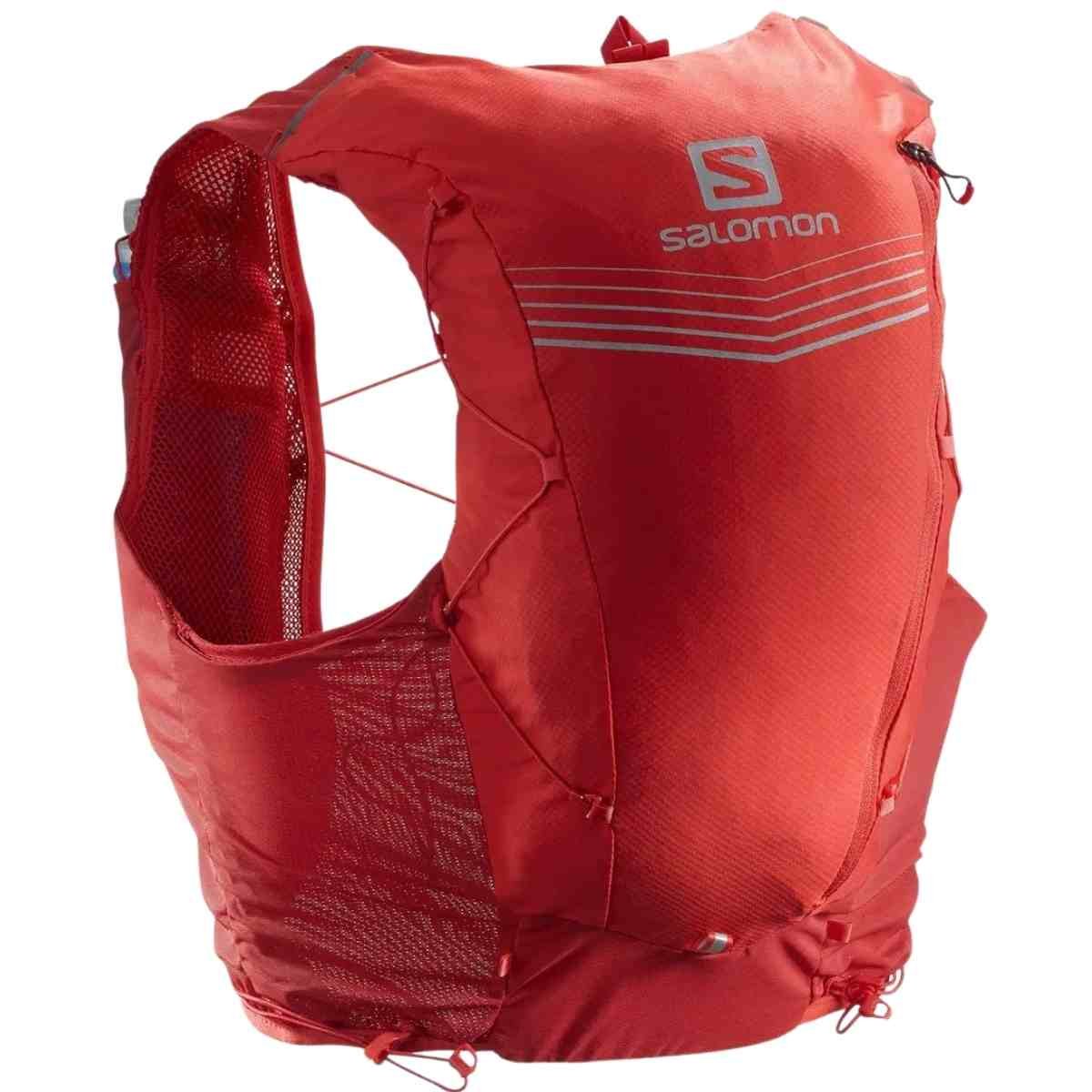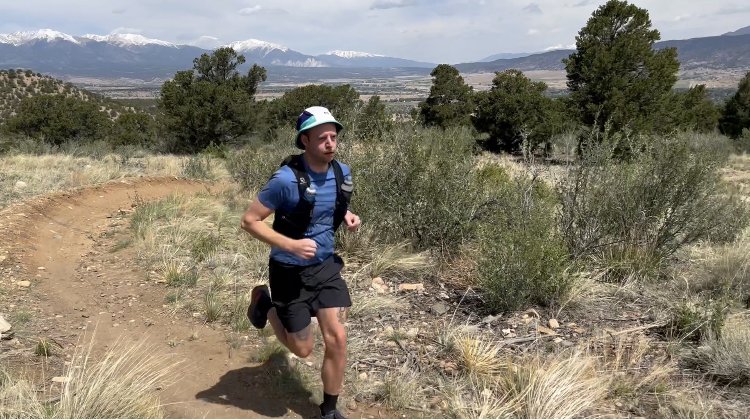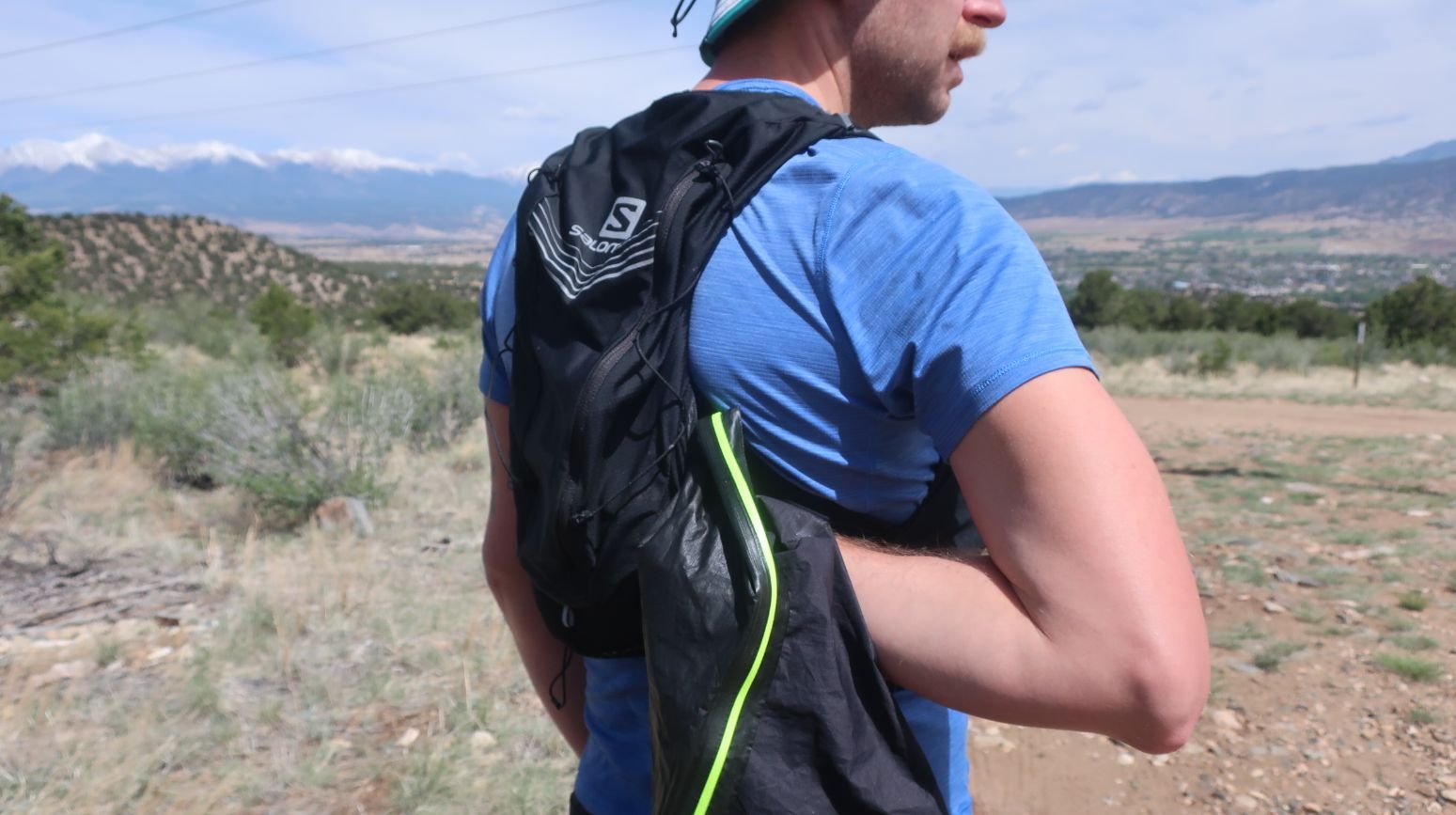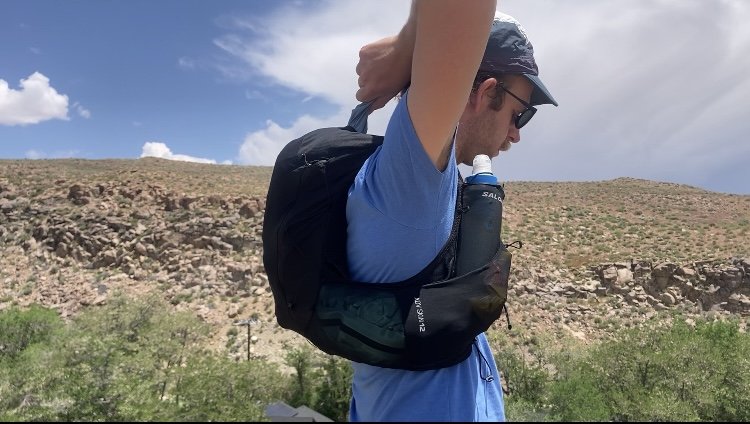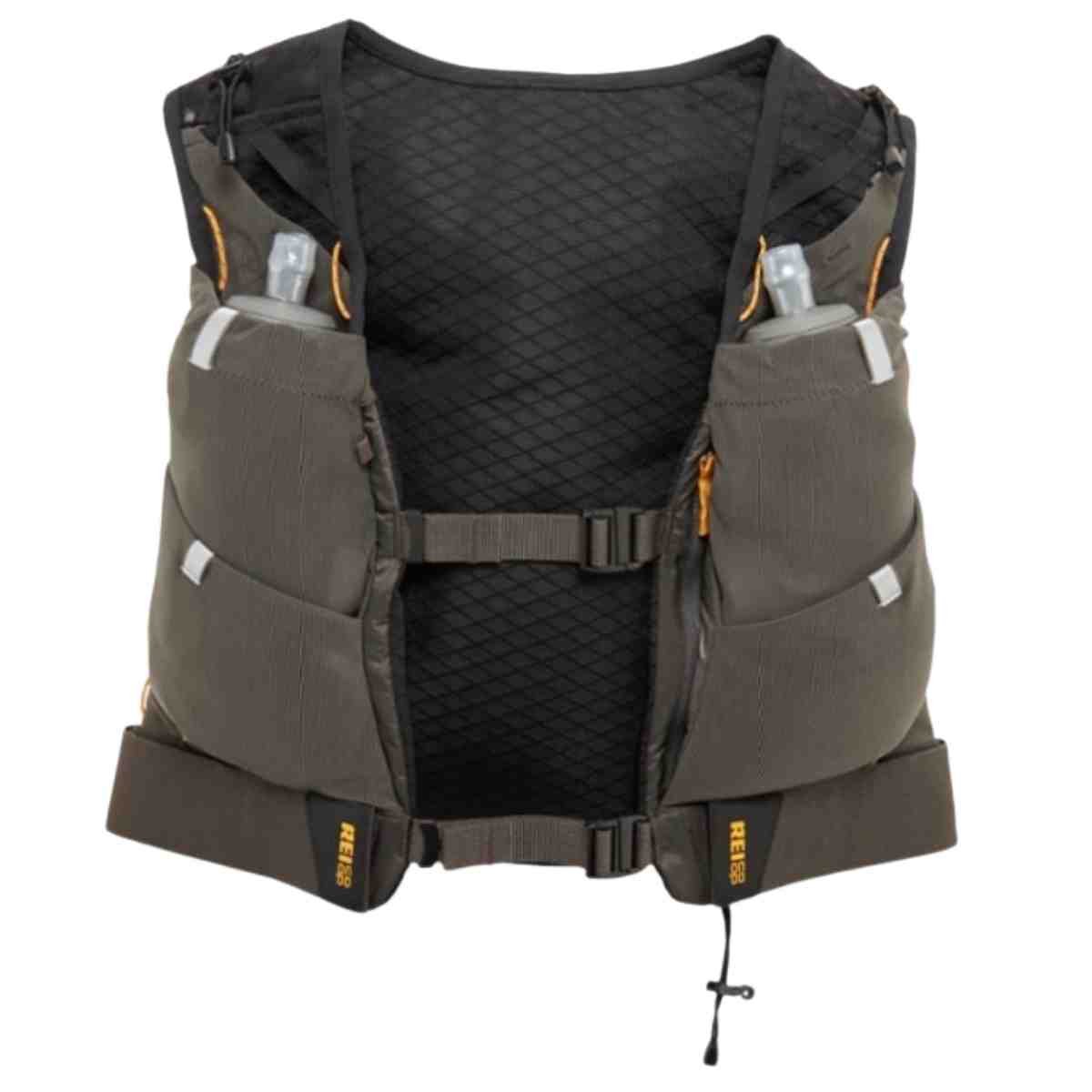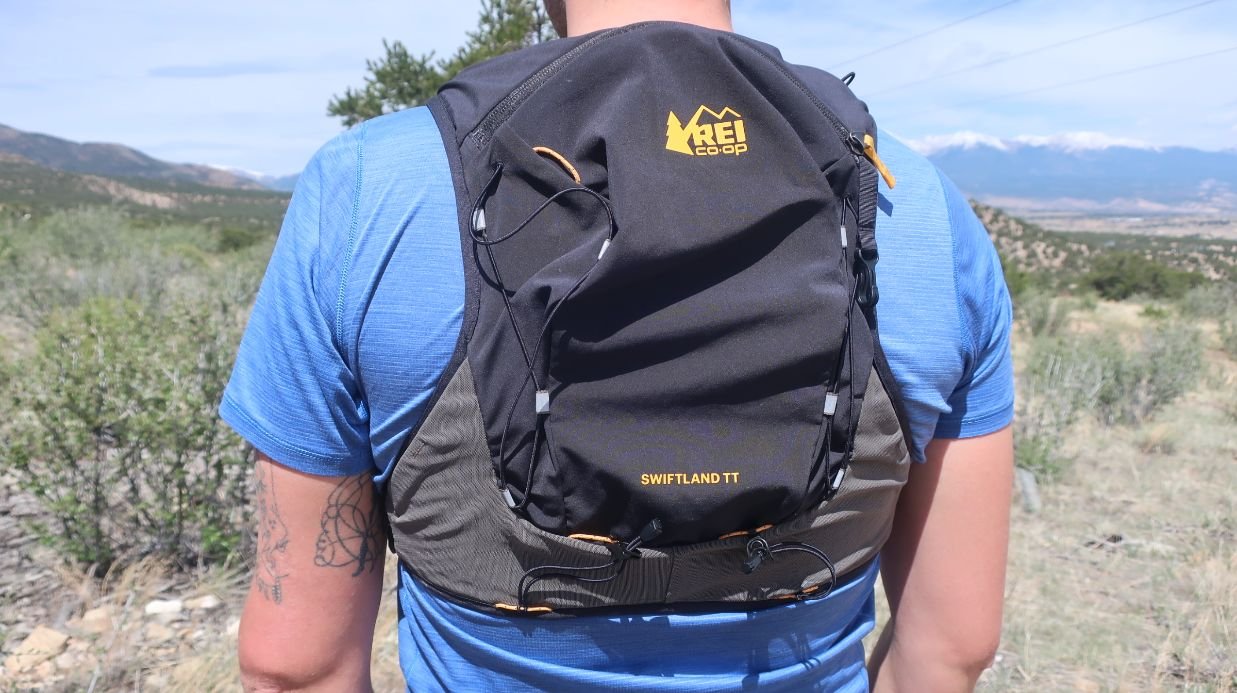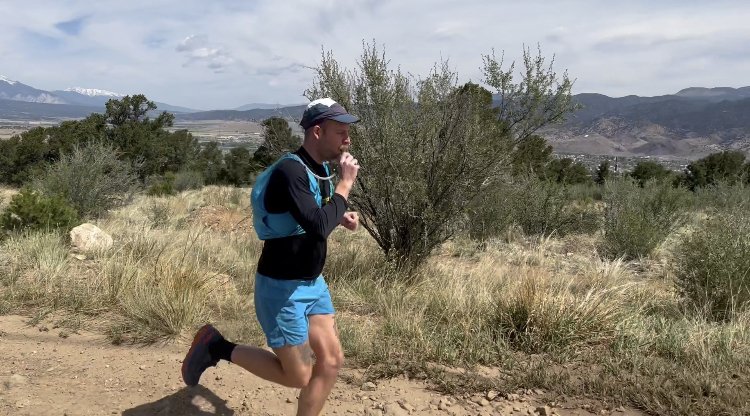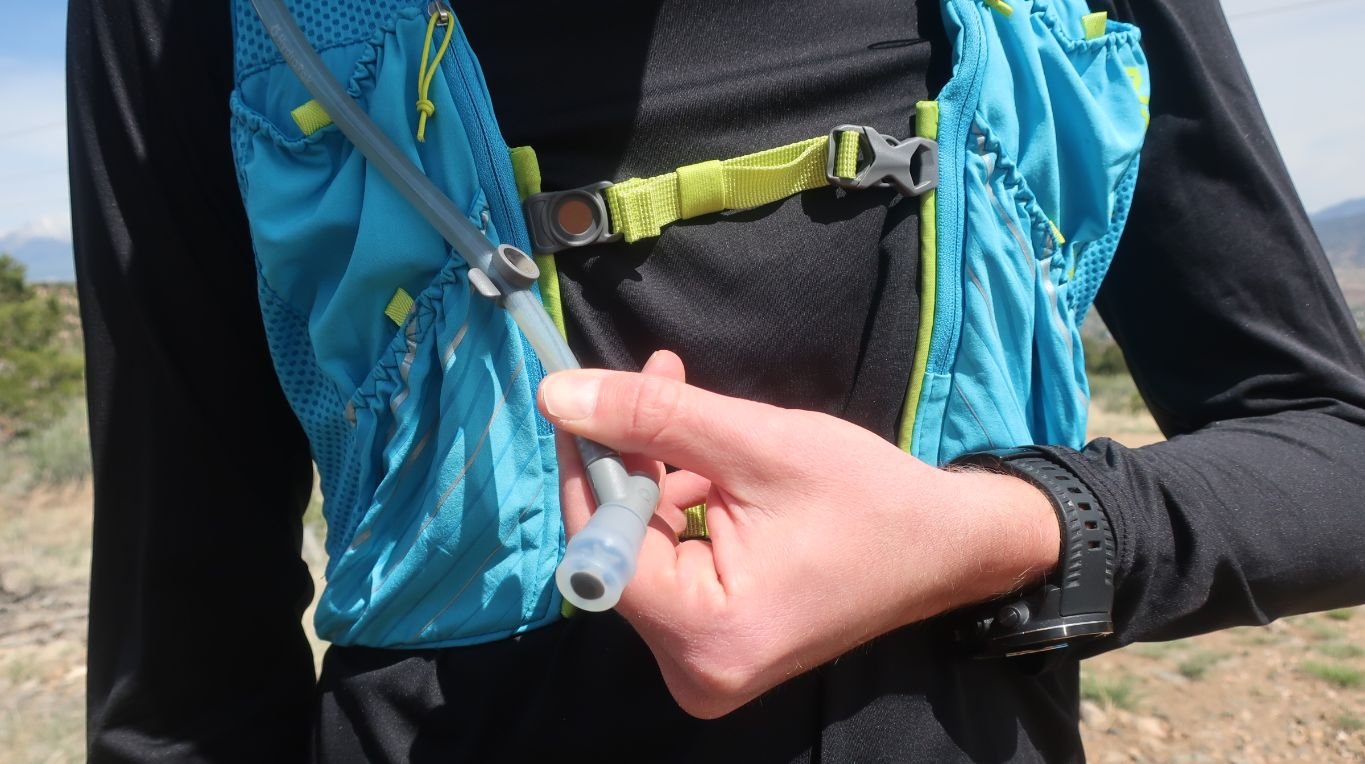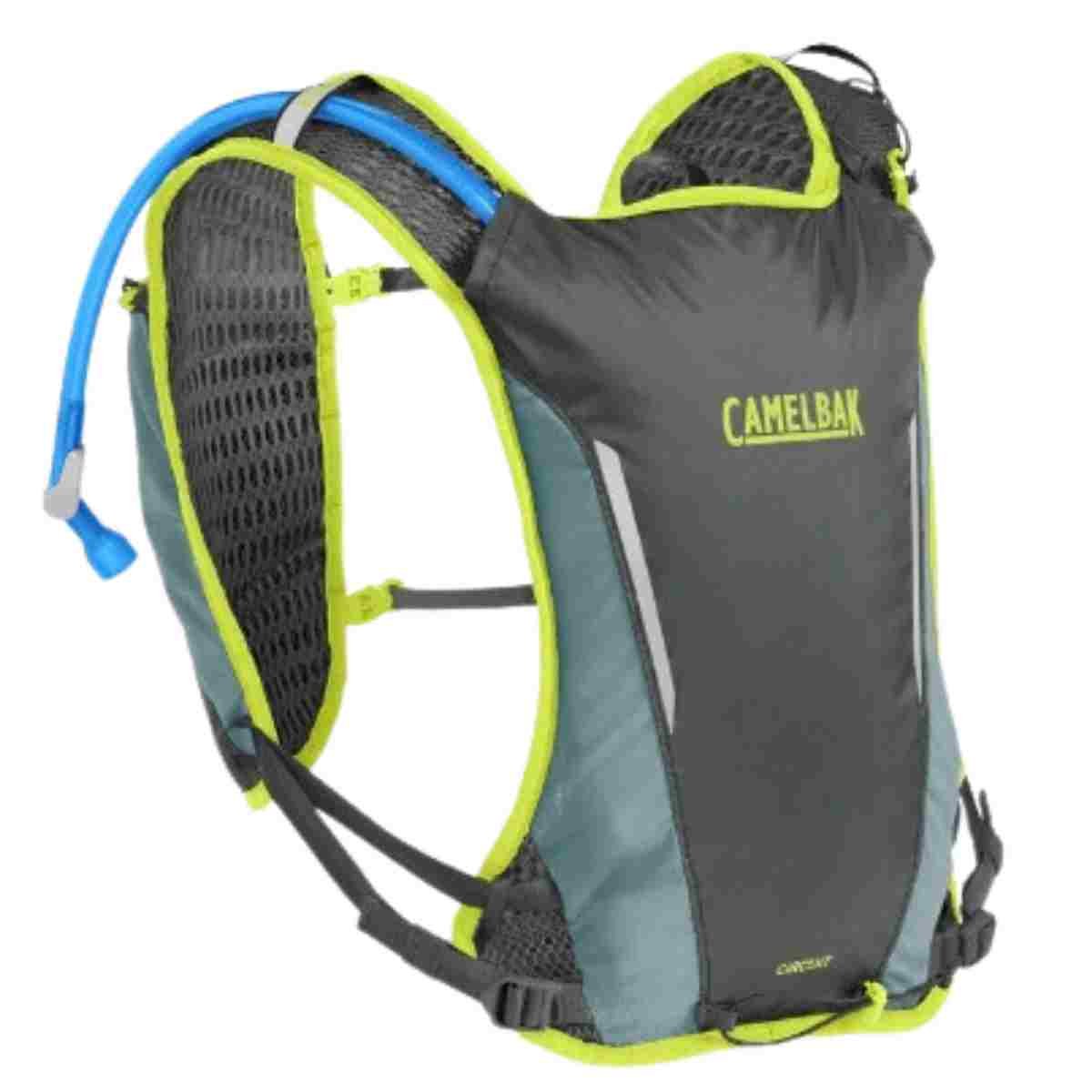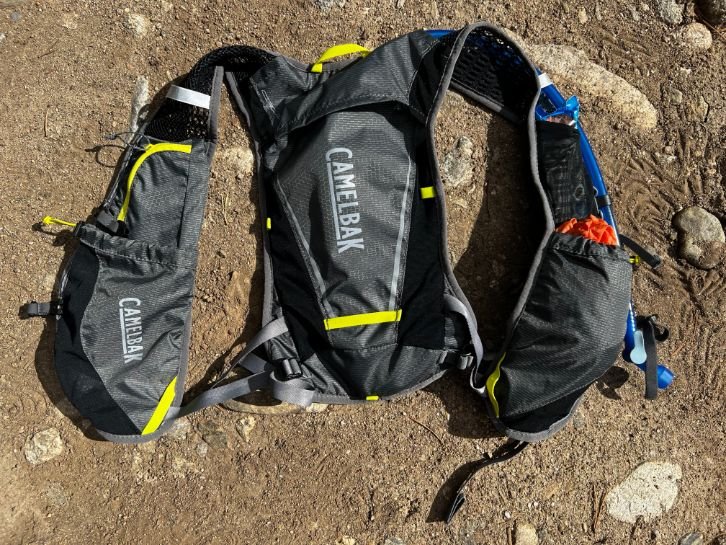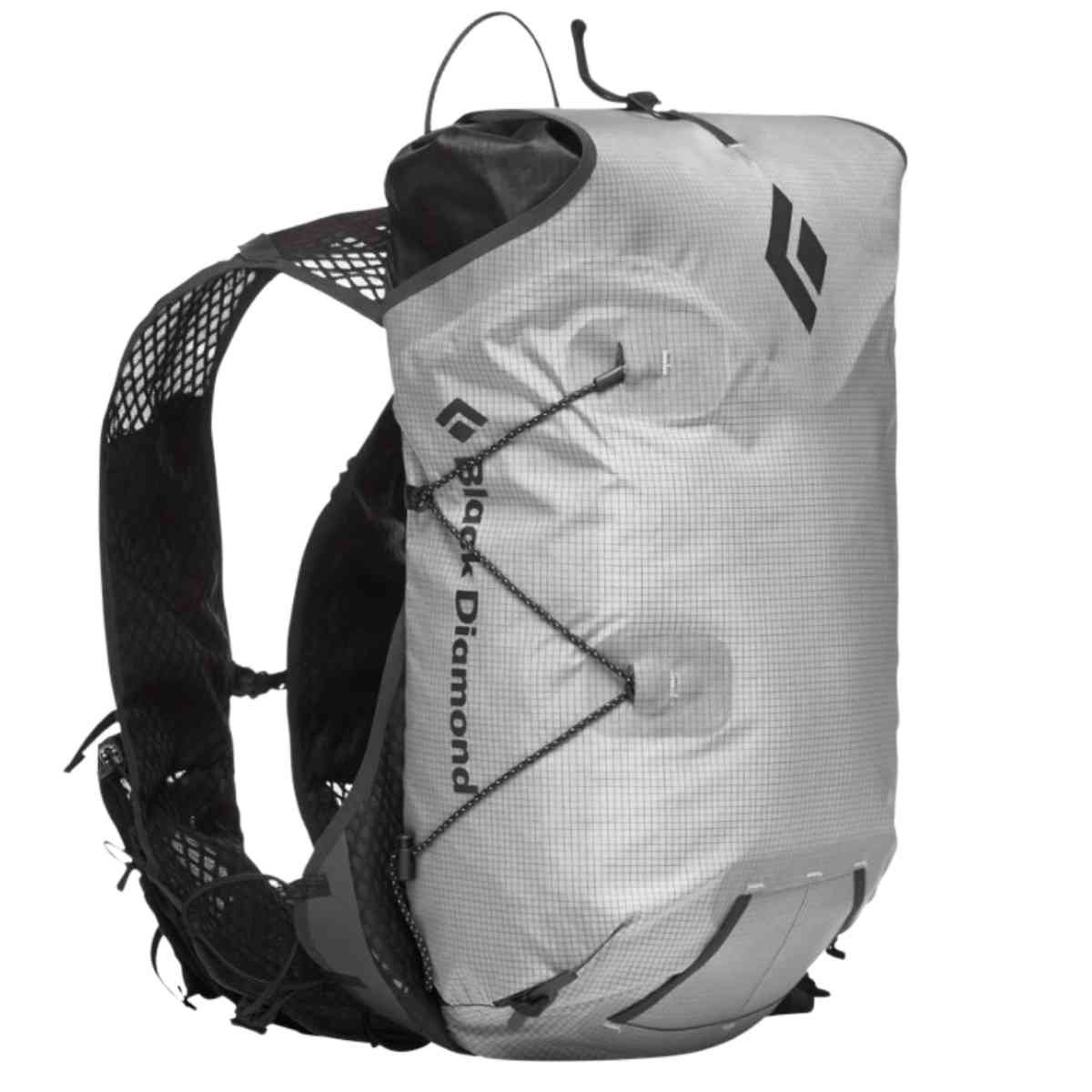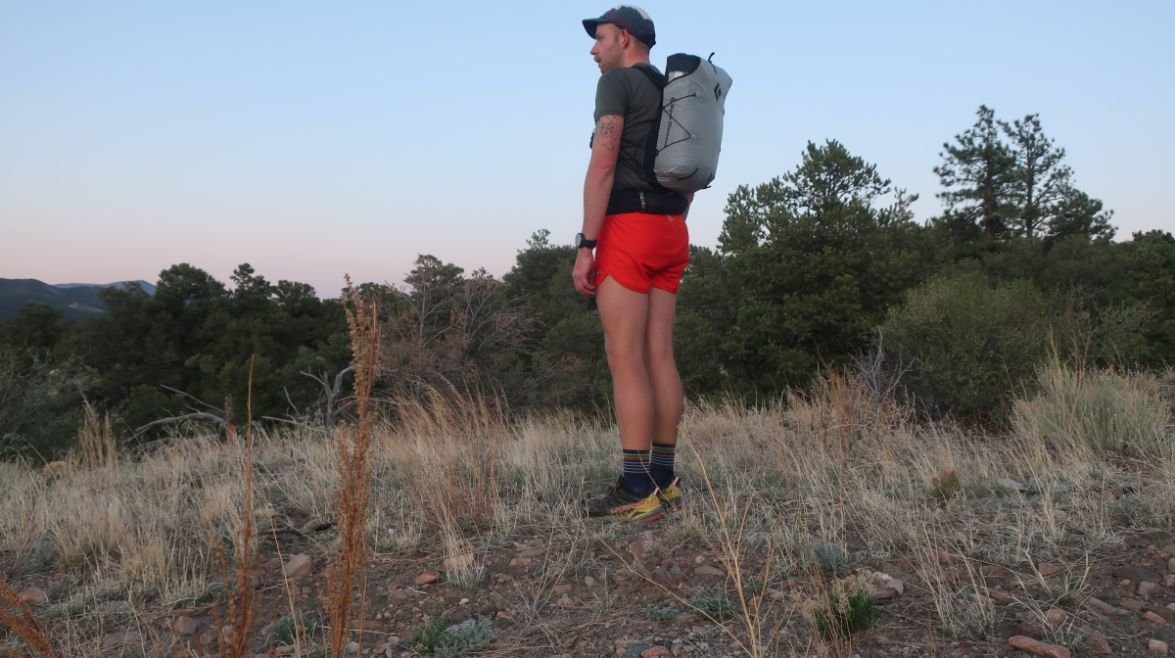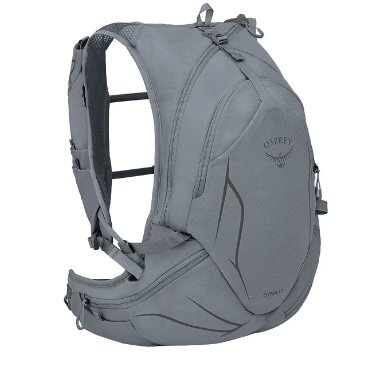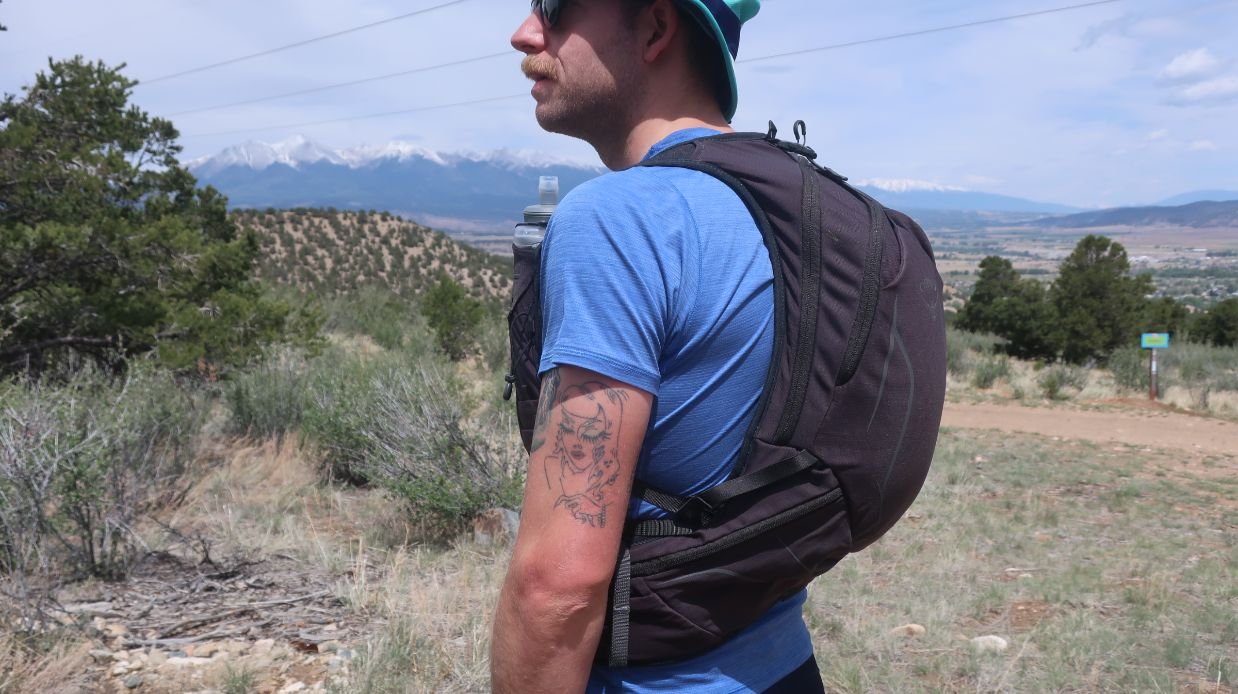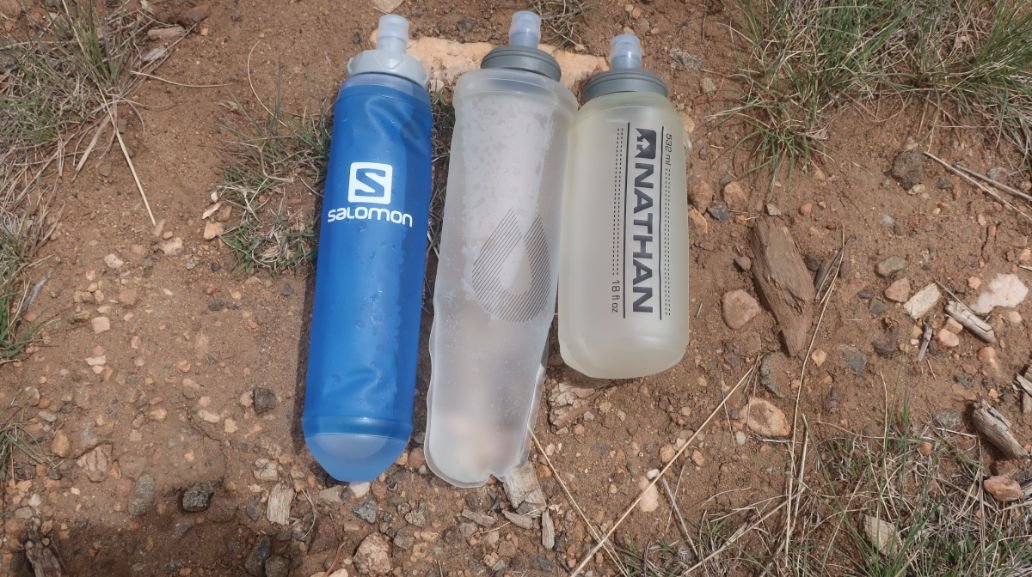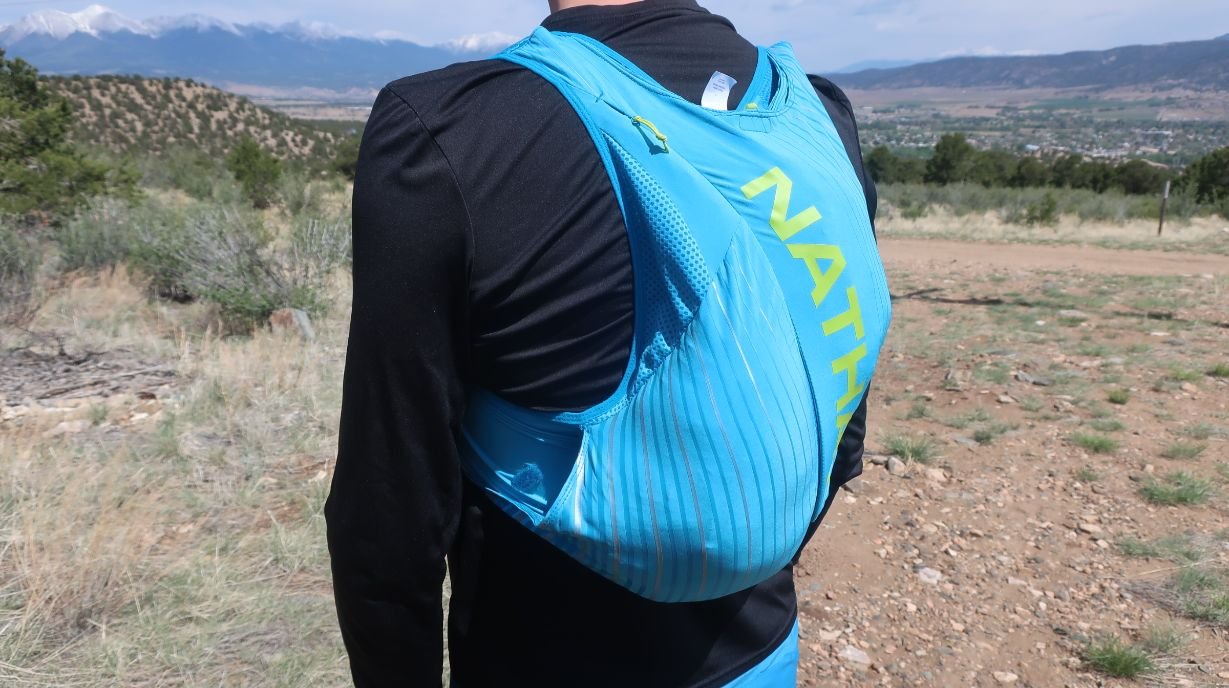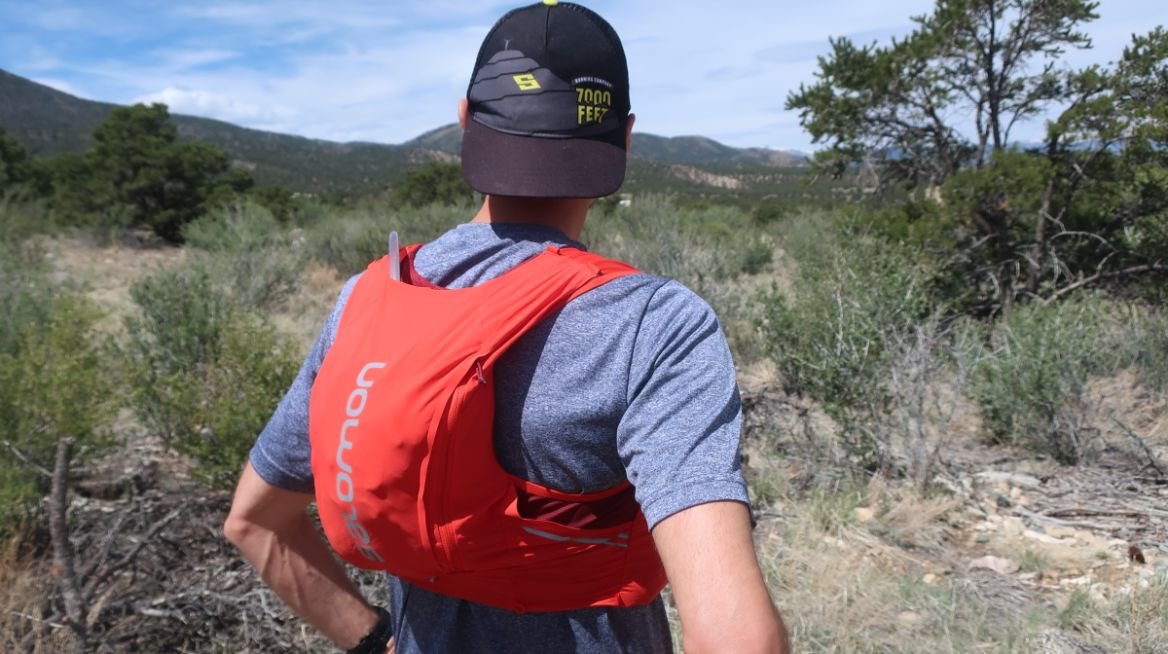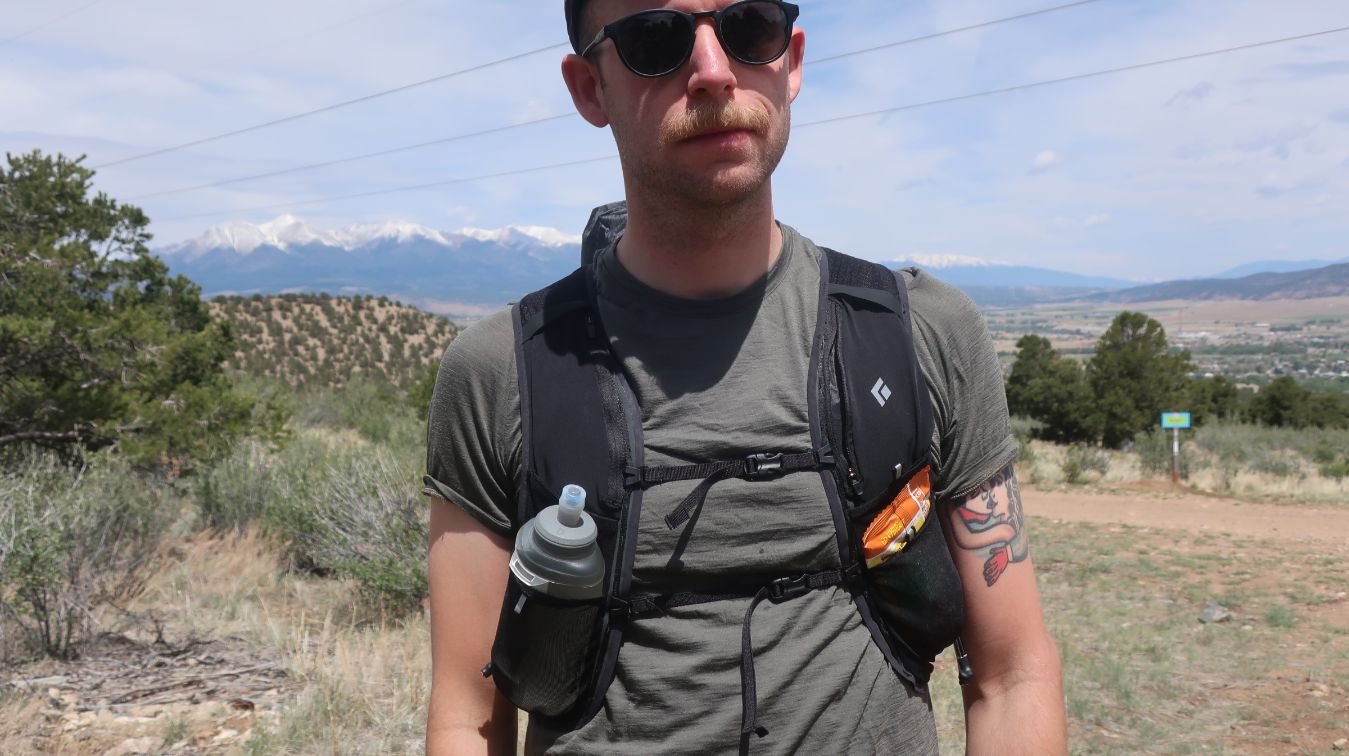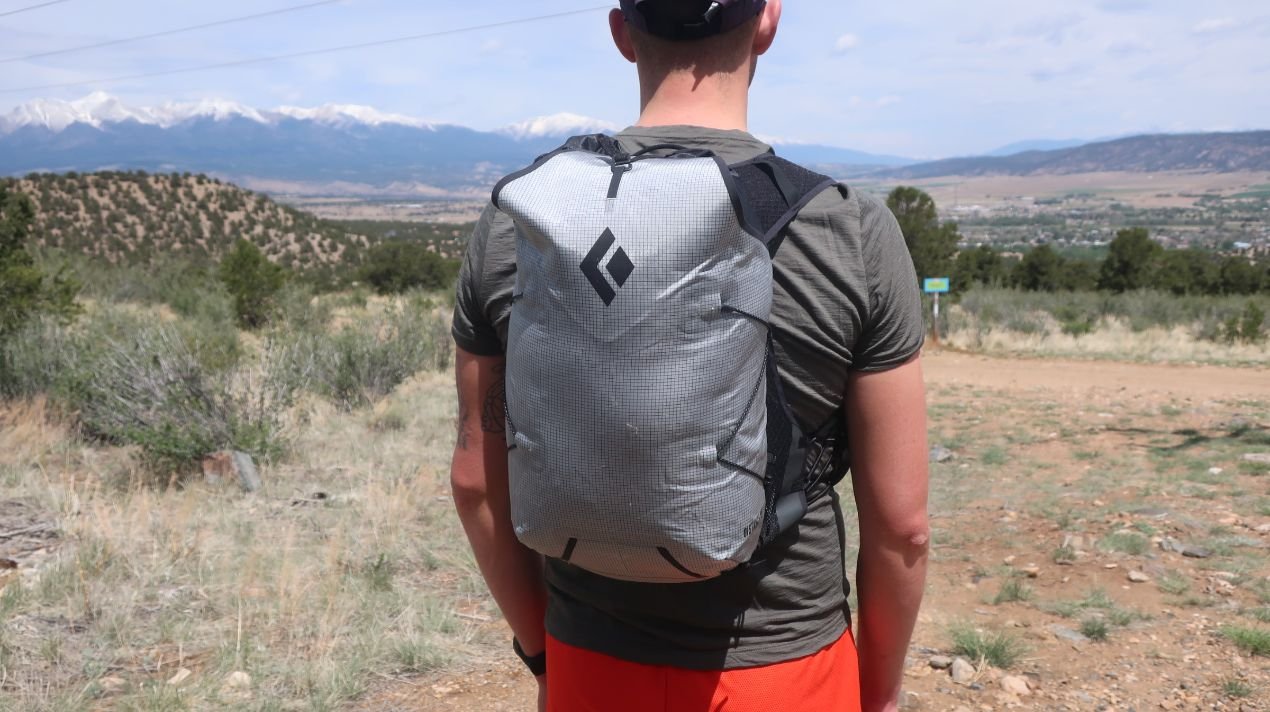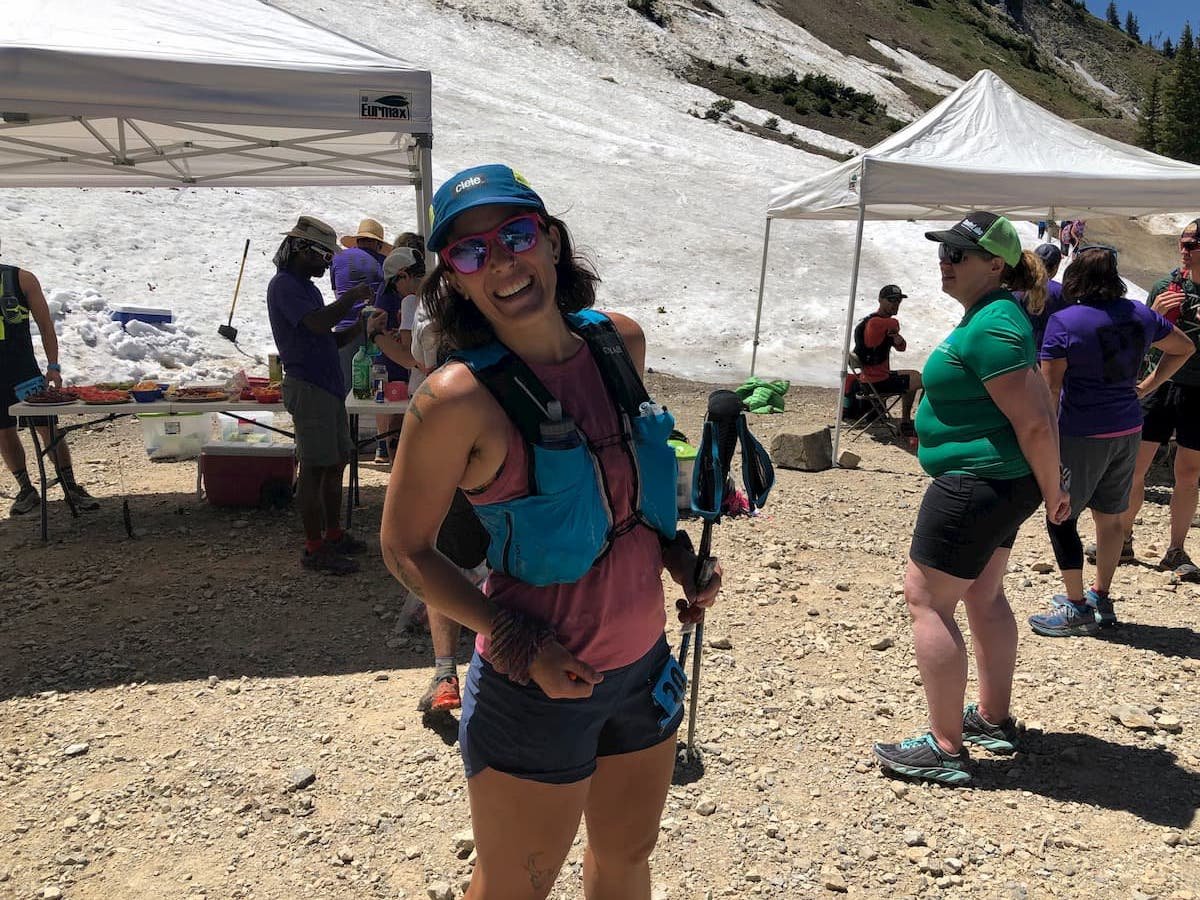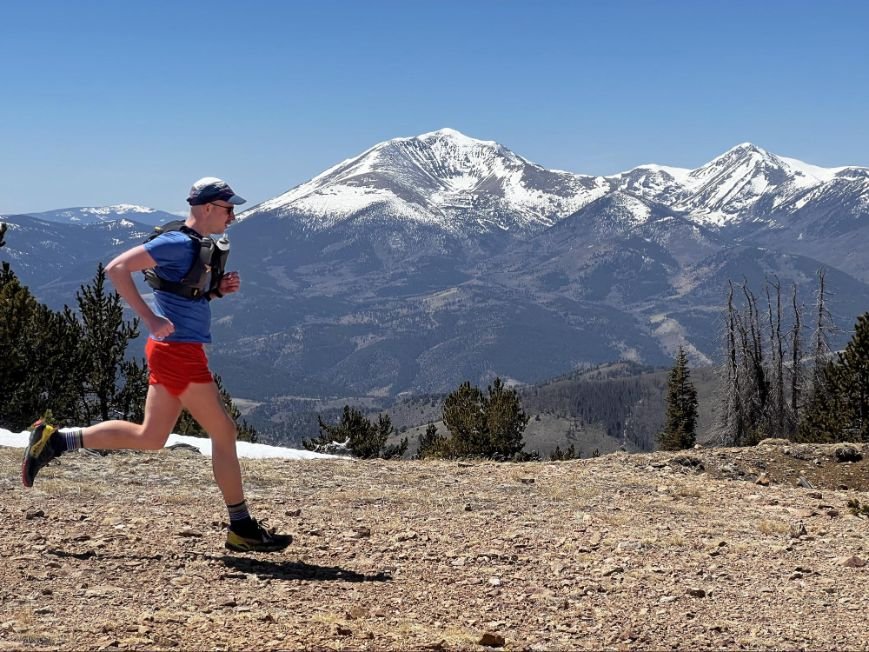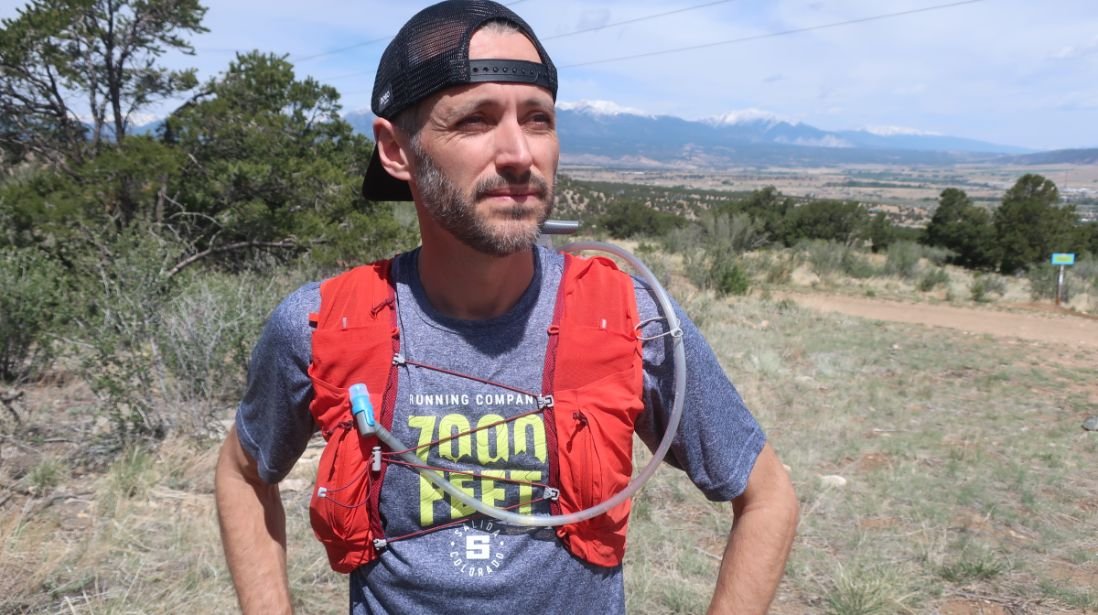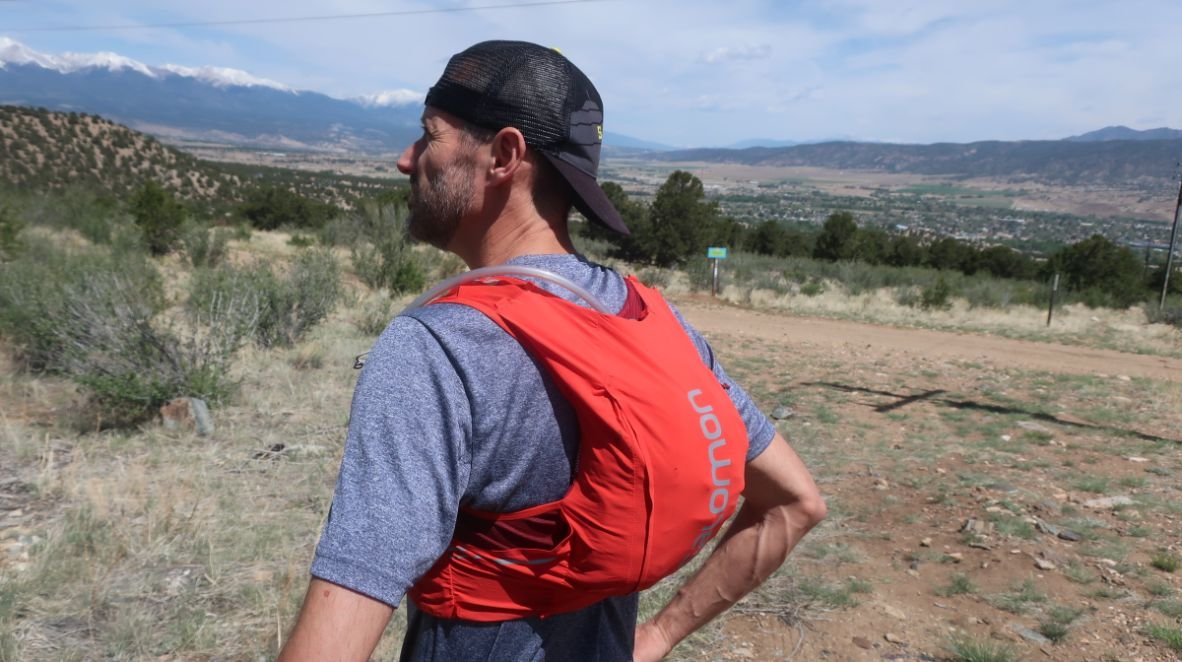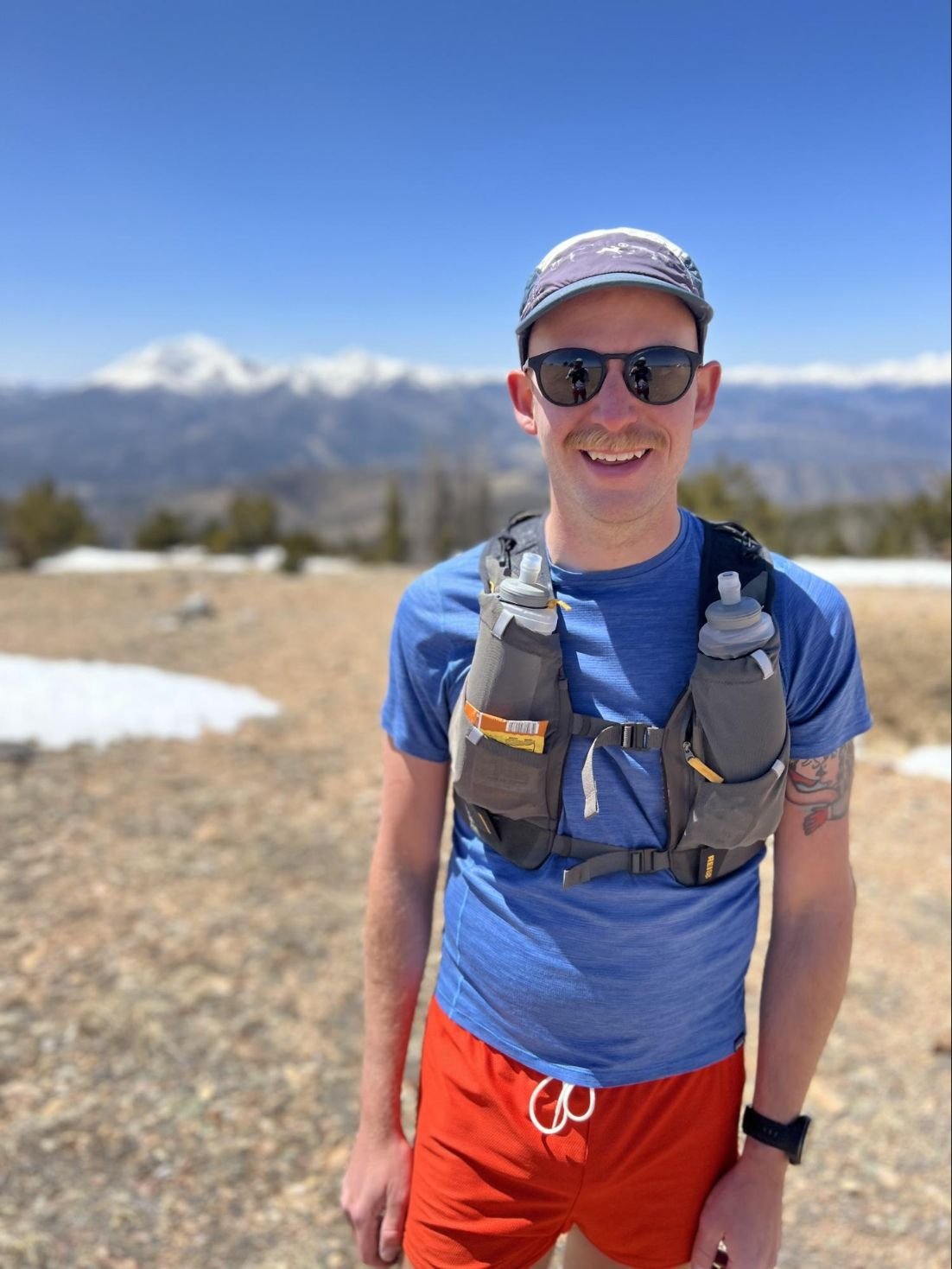Best Running Hydration Vests of 2024
Top-rated running vests & running packs with reservoirs and water bottles for men & women
March 18th, 2024
Home > Gear Reviews > Running
Running vests allow us to run farther, safer, and more comfortably. A hydration vest will carry extra water, food, clothing layers, our phone, and first aid items more securely than a traditional day pack.
We can run the local road marathon with a hydration vest or hit the trail from the foothills and into the mountains. Some even choose to take hydration packs on an overnight backpacking trip, trail run, or multi-day ultra races of 100 miles or more!
Most runners use a running vest on your typical weekday run when you want to carry a little bit more than what you can carry in your shorts pocket, or handheld water bottles.
For a lot of us, running consistently means running happy. So we’ve explored hydration vests and hydration packs of different shapes, pocket designs, carrying capacities, torso lengths, fabrics, and more to discover their strengths and weaknesses to find the best running hydration vests.
We create reader-supported, objective gear reviews independently selected by our editors. This story may contain affiliate links, which help fund our website. When you click on the links to purchase gear, we may get a commission — without costing you an extra cent. Thank you for supporting our work and mission of outdoor coverage for every body! Learn more.
Comparison Tables
Men’s
| RUNNING HYDRATION VEST | TREELINE AWARD | HYDRATION INCLUDED | CAPACITIES AVAILABLE | WEIGHT | SIZES | EXTERIOR POCKETS |
|---|---|---|---|---|---|---|
| Salomon Advanced Skin 12 | Best Overall Running Vest Read review |
Y, 2 bottles | 5 L, 8 L, 12 L | 9.5 oz (12L) | XS-XL | 6 + main pocket |
| REI Co-op Swiftland TT | Best Affordable Running Vest Read review |
Y, 2 bottles | 7 L | 10 oz | S | 7 + main pocket |
| Nathan Pinnacle 12 L Hydration Vest | Best Running Vest with Bladders Read review |
Y, 1.6 L reservoir | 12 L | 12.5 oz (with bladder)/6.5 oz (without bladder) | XS-XL | 13 |
| Nathan Vaporair 3.0 7L | Best Plus-Size Hydration Vest Read review |
Y, 2 L | 7L | 13 oz | XXS-3XL | 5 + main compartment |
| Camelbak Circuit Run Vest | Best Minimalist Running Vest Read review |
Y, 1.5 L reservoir | 5.5 L | 12.7 oz (includes reservoir)/6 oz (without reservoir) | One size | 5 |
| Black Diamond Distance 15 | Best High Capacity Runing Vest Read review |
N | 15 L | 13.9 oz | XS-L | 6 + main pocket |
| Osprey Duro 15 L | Best Run-Hike Hybrid Vest Read review |
Y, 2.5 L reservoir | 15 L | 12 oz | S/M, L/XL | 13 |
Women’s
| RUNNING HYDRATION VEST | TREELINE AWARD | HYDRATION INCLUDED | CAPACITIES AVAILABLE | WEIGHT | SIZES | EXTERIOR POCKETS |
|---|---|---|---|---|---|---|
| Salomon Advanced Skin 12 | Best Overall Running Vest Read review |
Y, 2 bottles | 5 L, 8 L, 12 L | 9.5 oz (12L) | XS-XL | 6 + main pocket |
| REi Co-op Swiftland TT | Best Affordable Running Vest Read review |
Y, 2 bottles | 7 L | 11 oz (medium) | XS-1X | 7 + main pocket |
| Nathan Pinnacle 12 L Hydration Vest | Best Running Vest with Bladders Read review |
Y, 1.6 L reservoir | 12 L | 12.5 oz (with bladder)/6.5 oz (without bladder) | XXS-XL | 13 |
| Nathan Vaporairess 3.0 7L | Best Plus-Size Hydration Vest Read review |
Y, 2 L | 7L | 13 oz. / 8.8 oz (without bladder) | XXS-3XL | 5 + main compartment |
| Camelbak Circuit Run Vest | Best Minimalist Running Vest Read review |
Y, 1.5 L reservoir | 5 L | 12.7 oz (includes reservoir) | One size | 5 |
The Best Running Hydration Vests
Best overall running hydration vest: Salomon Adv Skin 12
Capacity: 12L
Other capacities available: 8 L, 5 L
Included hydration: Yes
Women's-specific fit available: Yes
Weight: 9.75 ounces (335 g)
What we liked: Performs equally as well empty as full. Dialed fitting system
What we didn’t like: Some small plastic pieces that can break
Salomon is a big name in trail running, and the Salomon Adv Skin 12 vest lives up to it. With a storage capacity of 12L, it’s in the middle of the capacity range among our other vests, and it carries all 12L of gear just as well as it does when the pack is nearly empty. We’re confidentthat this is the most comfortable hydration pack we tested.
Salomon “Adv Skin” mesh balances breathability, durability, and stretch. This pack won our award for best hydration pack because it is notably the most comfortable. Of the packs we tested, it conforms the best around the ribs, where a lot of oddly shaped gear (food, headlamps, layers, etc.) usually ends up. This discomfort is a common flaw in the running pack category. The Salomon Adv Skin's mesh kept everything in place so we could run comfortably.
Men's Salomon Adv Skin 12
Women's Salomon Adv Skin 12
More than any other pack, we saw the Salomon Adv Skin 12L on the backs runners of many different body types on our local trails than any other. This is testament to the ease of adjustability of fit of the vest. Photo by Justin Walker.
Another advantage of this mesh is evident in the shoulder straps. The fabric has enough stretch to accommodate heavier water carries and other heavy gear while not being quite as stretchy as our other top pack, the Nathan Pinnacle 12L. Having that balance of static and stretch works for comfort on the Adv Skin. It also means the Salomon hydration pack will have more longevity than packs with other designs. Unlike other packs, it won't permanently stretch out quite as fast.
Another fit detail we liked is the bungee “Quicklink” style of adjusting the hydration pack up front. Found in all Salomon running vests, this criss-cross bungee allows for excellent stretch and better conforms to various body types compared to many vests—which tend to use the more common dual sternum strap.
Pushing a rain jacket into the right side of the tunnel-style pocket on the Salomon Adv Skin 12. Pushing this jacket into the right arm side would push existing items like gloves in the pocket towards the accessible left arm side instead of burying them under the jacket. Photo by Justin Walker
Pockets
Another highlight of the Adv Skin 12 is the pocket design. While some of the layerings of the pockets upfront can take some getting used to, we saw an advantage to the system. With the layered pockets, you can still access all the pockets, and a large item won't overlay other pockets or leave them inaccessible.
The mesh on the pockets is transparent, which also aids in finding stuff. The ability to find items is a common complaint we have when fishing around for stuff in packs — especially when they’re stuffed to capacity. Best of all, the Salomon has two outer zipper pockets on the front that are true phone-sized pockets, another rarity in trail running packs.
Hydration
For hydration, the Adv Skin comes with two 500ml soft flasks, equating to about a $40 value. We found that to help offset the initial sticker shock on this vest, which isn’t the most affordable on the list (but we do think it is a great value). Although it doesn’t come with a bladder, we dropped the included bladder from our Nathan Pinnacle 12L Vest into the Adv Skin bladder pocket. With a 1.5L bladder in the back, there was some room to spare. We’re confident that you could carry a 2L bladder in the back and 1L in the soft bottles up front if you really want to. There’d still be plenty of room for layers in the rear tunnel pocket, and food and electronics up front.
The latest version of the Adv Skin 12, released in 2022, is on the left, with our well-loved older model on the right. Photo by Trey French
Comfort And Fit
The front adjustment Quicklink system is the most adaptable to different body types of the vests we tested. It allows some comfortable stretch, but adjusting the placements of the contact points can be tedious.
Front view of the updated Salomon Adv Skin 12 running pack. The front and most of the pack remain mostly unchanged in the newest update. However, the top pocket is the big change on the newer version.
Adjustment
Salomon uses small hardware plastic pieces that are difficult to unclip and move up and down the hydration pack. Our advice is to be patient with it because once you find where you want the hardware, you won't have to adjust it again. Also, with all the small plastic pieces, there’s more opportunity for something to break. But it hasn’t happened to us yet, and our reviewer has owned this pack for two years, with runs ranging from 1 ½ hours to long runs of 6+ hours.
Updates In The Newest Version
The updated top pocket on the Salomon Adv Skin 12 is isolated in the top one-third of the back of the vest. This makes it easy to pack and repack a wind shell or running jacket—whatever is your layer of choice. This is especially true if you are the type of runner who chooses to size up on your jacket so that it fits over your pack (so that you keep moving without removing it.)
With this update, we’re really digging to find a complaint on the newer version of this pack.
While there are several pockets and areas to store jackets, one feature we liked on the newest version of the Salomon Adv Skin 12 is the ability to store a compact jacket on the top pocket. This may be more suitable for those with limited shoulder mobility. Photo by Trey French
In addition, Salomon added places to lash a pair of collapsible trekking poles in the newest version. Thankfully, They’ve also made an updated women’s specific version of this hydration pack to be more ergonomic.
For an in-depth review, see our long-term review of the Salomon Adv Skin 12.
Interested in running? Check out the Running Gear section:
Best affordable running hydration vest: REI Swiftland TT
Capacity: 7L
Other capacities available: 5 L
Included hydration: 2 x Hydrapak soft flasks
Women's-specific fit available: Yes
Weight: 10.5 ounces
What we liked: No frills, intuitive vest. Ships with bottles.
What we didn’t like: Sits high, with a hard-to-reach tunnel pocket. Not the most dialed-in fit for some.
The REI Swiftland TT is the least expensive vest in our line-up and the Best Value Running Vest we tested. It retails for $130.00 and ships with 2 x Hydrapak 500ml soft flasks, valued at around $40-45. Given the lower price point, smaller stated carrying capacity, and a fit system that departs from the other hydration packs on our list, we were curious about the bounce and general comfort of the pack. The results were that we seriously recommend this hydration pack.
Men's REI Swiftland TT
Women's REI Swiftland TT
The REI TT had the most simple pocket design. Though not the most accessible rear pockets, while wearing. It’s easy to find items once you remove the pack. Photo by Justin Walker.
Volume And Capacity
After many shorter runs in the 1 hour to 90 minutes range, we took it up a steep climb, accumulating about 4,200 feet of gain over 13 miles round trip. For that run, it was stuffed with a sandwich, some chews, a waffle, chips, and 1.5L of water. We wore the two soft flasks up front, and a single Befree .6L filter mostly full in the back. We also brought a phone, warm hat, gloves, wind shell, sunblock, and chafing balm. Even with all that gear, there was still room to spare.
Fit And Adjustability
For adjustability, the Swiftland TT uses a stretchy velcro strap along with sides around the ribs to cinch the vest down to accommodate varying body sizes. We found it easy to cinch down during a run as needed.
Up front, the hydration pack uses two fixed, static sternum straps, non-adjustable in height. We didn’t experience any fitting issues with this, though we could understand if someone would prefer the more adjustable strap systems on other vests that allow changing the placement of the sternum straps along the chest, or the elastic bungee style found on Salomon hydration packs.
Pockets
The REI vest shares similar pockets to other vests on our lineup. In fact, we find the pockets more intuitive than many vests that we tested. Not to say that the pockets are superior, but they’re easy to use, and there’s not a lot of pocket overlapping to create confusion.
A couple of standout pockets on this vest are the zippered pocket on the left shoulder strap that actually accommodates a phone and a pocket up high on the chest for storing a Personal Locator Beacon like a Garmin inreach mini.
The adjustable velcro strap on the REI Swiftland TT helps get a dialed fit. Photo by Justin Walker.
Breathability
There are a few downsides to the REI Swiftland TT, namely in breathability. The fabrics used on the hydration pack are on the heavier side and seem to trap heat a little more than the other packs we tested. Still, with that heavier fabric, the pack could outlast some other packs in terms of durability and avoiding tears, but the verdict is still out.
Ride And Mobility
Some reviewers note that the pack sits on the high side. We also found this pack to sit higher on the back than all of the hydration packs that we tested. However, this helped counter the heavier fabric by allowing better venting on the mid-back. The downside is we also found that the rear tunnel pocket was really tough to reach with the pack on. Our reviewer has less mobility in the left arm and shoulder from an early-life injury, and couldn’t reach it at all with that arm.
Lastly, the velcro straps are pretty thick. While this Velcro will last and is quite durable, it also creates a place that traps heat, and we tended to sweat a lot on the side body area when we took it out on a long run.
Our Verdict
While it doesn’t have the most sophisticated and nuanced design out of the vests we tested, for the price, the Swiftland TT checks all our boxes for what we look for in a pack regarding carrying comfort, pockets, and ventilation. It’s a great value, and worth considering. REI customers, by and large, review it positively and we recommend it as well for folks looking to spend less than $150 for a running pack set-up.
Best hydration vest for using bladder reservoirs: Nathan Pinnacle 12L
Capacity: 12L
Included hydration: 1.5L Insulated bladder
Women's-specific fit available: Yes
Weight: 11 ounces
What we liked: Ships with an insulated bladder. Bladder design.
What we didn’t like: The most expensive vest on our list.
The Nathan Pinnacle 12L has the best bladder design and hydration system of the running vests we tested. It ships with a 1.5L Hydrapak insulated bladder, insulated to help keep water cold on the hottest summer days. The shape of the actual bladder is tapered in the middle, creating an hourglass shape, which we found helped with the sloshing problem inherent with many running vest bladders.
The hose, like many, is meant to be cut to length, and we found this especially important on this vest, as Nathan incorporates a magnetic hose clip that keeps the hose out of the way, and secure against the right shoulder strap. With Nathan's system, we experienced no flopping and it’s always in place for you to take a drink. We can’t emphasize how much we like this magnetic feature for the hose.
Men's Nathan Pinnacle 12L
Women's Nathan Pinnacle 12L
The author running with the Nathan Pinnacle while drinking from the hydration tube. Photo by Justin Walker
Hydration
Using the bladder does seem to be the focus of this pack, as the soft flask bottle holders are looser than the other packs we tested, but not to the total detriment of function. The soft flasks are easier to get into place on this pack than a lot of vests, but also can tend to sink down, or flop over depending on the bottle you’re using.
One easy fix is to add a bungee cord attachment yourself, similar to what’s found on all of our other hydration packs to hold the soft flask tops. There’s a tab sewn onto the bottle pockets to make this easy enough. For the price, it’d be nice if Nathan could include these with the vest as an optional attachment.
The Nathan Pinnacle has a magnetic clip on the top sternum strap to keep the hose secure on the runner’s chest. It kept the hose in place and was easy to use. Photo by Justin Walker
Pockets
Apart from the water storage design, Nathan also takes a different approach to the rear pockets. Instead of making a full tunnel rear pocket from one end to the other, Nathan keeps the dual access points, one entry on the left and right, but routes the pockets upward towards the top of the hydration pack, making them two separate pockets.
By separating the pockets, Nathan eliminates the possibility of pushing one item out of the left side of the pack when reaching into the right side and vice versa. They’ve even added small velcro tabs on each of the closures, and while they aren’t the most robust closures, it’s one more step to ensure the security of your items on the trail.
Another pocket feature we like is that there are two zipper pockets, one on each shoulder strap, that’s big enough for a phone, just like the Salomon Adv Skin 12L. You can keep less frequently accessed items that need security in the right one, under the hydration hose.
Weight And Durability
For downsides, we don’t have any major gripes with the Nathan Pinnacle 12L. It’s built with seemingly the thinnest materials out of all of the vests we tested and does raise some durability concerns. There were a couple of reviews highlighting some tears, but we’re unsure of the context that these users were using it in, as overloading a vest is always possible. The material is also the most stretchy, so there could be some premature wear in creating a permanently stretchy material. So far, none of these concerns have been validated during our testing.
Best Plus-Size Hydration Vest: NATHAN VAPORAIR AND VAPORAIRESS 3.0 7L
Capacity: 7L
Included hydration: 2L bladder
Women's-specific fit available: Yes
Weight: 13 oz (8.8 oz without bladder)
What we liked: Size inclusive, comfortable fit, breathable
What we didn’t like: Bladder can be difficult to open
What makes the Nathan VaporAir and VaporAiress stand out is its evident, comfortable body mapping and its inclusive sizing options. This is the only vest we tested that comes in plus sizes. Not only are plus sizes available, but our plus-size tester appreciated the comfort of the fit.
The body mapping design of a hydration vests refers to the release of heat from areas where heat retention is common into other areas. Body mapping of a vest like the VaporAir/VaporAiress results in a wearing experience that is breathable where it needs to be on the body.
The pockets of this vest easily accommodate a phone, wet wipes, chapstick, two gels, and other things you may need. The external front pockets fit our tester’s Hydrapak Flux 1 L and could fit gloves or other small items.
The back of the VaporAir features a 2 L bladder that can be difficult to open at first, but gets easier after practice.
Our complaints with the Nathan VaporAir and VaporAiress are few, and overall we appreciate the size inclusivity, comfort, and thoughtful design.
It strikes a balance between a running vest and a minimalist backpacker vest, or as some call it, fastpacking, where you incorporate running into overnight trips.
Men's Nathan Vaporair
Women's Nathan Vaporairess
Best minimalist running hydration vest: Camelbak Circuit run vest
Capacity: 5L
Included hydration: Y
Women's-specific fit available: Y
Weight: 6 oz without hydration bladder. 12.7oz with bladder
What we liked: Light, vents among the best of any vest, intuitive to use, made with recycled silver for a more sustainable silver anti-odor treatment, trekking pole attachment
What we didn’t like: Bladder somewhat difficult to remove, and sizing not the most inclusive
We were especially excited to use the Camelbak Circuit hydration vest due to its simple design, lightweight construction, and big, easy-to-access pockets. Its straightforward yet useful design makes it the Best Minimalist Running Hydration Vest.
We found the Camelbak Circuit vest in its element on hotter days in the front country when water is the premium, and there aren’t any refills along the way. With a 1.5L bladder, it’s enough for most runners to go for 1 ½ to 2 hours. The newest version uses repurposed recycled silver as an anti-odor treatment, among the first brands we’ve seen to take on sustainability in silver.
Men's Camelbak Circuit
Women's Camelbak Circuit
The Circuit has large, cinch closure front shoulder strap pockets. Photo by Trey French
Hydration System
While you could technically supplement the front of the vest with additional water, none of the soft flasks fit the Camelbak pack. The tall, slender flasks we own were too tall. The shorter, wider half-liter flasks fit securely but sat too low to use without loosening a cinch cord to remove the flasks.
Similar to the magnetic hose clip on the Nathan vest, the Camelbak uses a plastic clip to connect the hose to the front right shoulder strap. The hose isn’t as easily removed from the clip as on the Nathan. But we didn’t find this to be an issue, as we simply left the hose uncut, and had enough excess to pull it to our mouth without the hose getting in the way from being too long.
The main issue we had was with the bladder. While not painfully slow, the bladder can be a little tougher to remove and insert than other top-loading bladder vests on our list due to it being a flap closure.
Ventilation And Performance In Hot Weather
Being that the Camelbak Circuit has less surface area on the sides, it uses 3D Micro Mesh to allow heat to escape. 3D Micro Mesh is similar to spacer mesh that you might find on a seat in your car. It breathes just as well as any vest on our list, if not the best. This vest especially shines for runs in hot weather.
Pockets And Capacity
There are five total pockets on the Camelbak Circuit 5 L vest, including the large rear pocket. Since we prefer to use the bladder on the Camelbak, all of our other gear goes up front. Our reviewers iPhone SE in a Lifeproof case fit in the secure zipper pocket up front, but with not much room to spare. If you have a larger phone, it likely won't fit in the up-front pocket, but it should fit with no issue in the lower front cinch closure pockets. We found those pockets to be secure as well.
There’s a stated 3.5L of capacity up front on this vest and slightly more in the women’s version. We found that to be plenty of room for our phone, keys, chafe balm, sunblock, and snacks. We didn’t carry much else in the Camelbak Circuit, but if you wanted to stash a wind shell and gloves, and other small items, there’s room for those, too.
A wind shell in a front large pocket, a snack bar in a stretchy front pocket, and an iPhone SE in a Lifeproof case in the left zipper pocket. The plastic hose clip is shown just to the left of the top stretchy sternum strap. Photo by Justin Walker
Fit
Reviewers speak highly of the Circuit, both about the men’s and women’s versions. One female tester found the men’s version to be a better fit, as she found the longer torso of the men’s version more suitable for her torso.
A few downsides to the Circuit vest are that it's a one-size-fits-most. While the men’s sizing accommodates chests from 28-50”, which may not cover some larger chested runners. The women’s size accommodates chests down to 24”.
Versatility
Some testers found the Circuit not only to make a great running vest, but to be a useful tool for mountain biking and walking, too.
We think this may be because the Circuit has an intuitive, easy-to-use design. Every pocket is simple, nothing gets lost, and it houses the basics.
Best high-capacity running hydration vest: Black Diamond Distance 15
Capacity: 15L
Included hydration: None
Women's-specific fit available: No
Weight: 14.25oz
What we liked: Comfort when full!
What we didn’t like: The front bottle pocket design. The pack needs to be full.
Despite having running vest-style straps up front, the Black Diamond Distance 15L pack is a total departure from the other hydration vests we tested. It uses static fabric for the rear pack body and a backpack-style top-loading pocket with a cinch and snap closure at the top.
It strikes a balance between a running vest and a minimalist backpacker vest, or as some call it, fastpacking, where you incorporate running into overnight trips.
Late afternoon into evening run. Paired with a Naked running belt, the Black Diamond Distance 15 accommodated a minimal overnight kit. Photo by Trey French
Volume And Capacity
Our reviewer is a little on the fringe side when it comes to backpacking gear, sometimes taking around 6 lbs on fair-weathered summer overnight trips. He was able to stuff his entire kit into the main compartment of the Distance 15. This included a quilt-style Katabatic Palisade 30° sleeping bag, a tarp, stakes, lightweight bivy, rain shell, inflatable pillow, headlamp and electronics, first aid kit, trowel, and a little bit of food. He could fit all of the water up front, with some snacks.
To make overnighting a little more feasible, we found that wearing a running belt like the Naked running belt helps to hold things like your phone, more water, and more food. The nights were still too cold during testing to take this minimal kit into the mountains, but we’re confident that it’ll do the job, whether it’s scouting big running routes where the approach is long enough that it makes more sense to sleep out there instead of running back to the car, or just for the sake of trying to backpack with so little.
Comfort
What impressed us the most is how comfortable the Distance 15 carried all that stuff. We expected a lot of sway from side to side, but the vest holds everything firmly against the back. It seemed that the more tightly we stuffed it, the better it carried.
Bounce
To that end, we also found that since it’s a top loading, single compartment type of pack — with the addition of pole pockets on the side (or for tent stakes and a small layer) — the few items that you might take on most runs bounce around a lot if the pack is only partially full. So, it’s not going to be the best everyday run pack but serves a niche purpose.
Walking is always allowed in running, especially when you’re carrying 15L of gear! Photo by Justin Walker
Hydration System
One complaint that we had about this pack was the front soft flask bottle pockets. They’re simply too narrow. None of the bottles that we had would fit in there empty, much less when we had other items in the surrounding pocket. We worked around this by loading short and wide soft flasks into the lower front snack pockets.
This solution isn’t ideal, as it hinders any use of the bottle pockets by covering them up, and reduces the overall volume of an already minimalist pack for its use case. We hope to see Black Diamond address this issue for future iterations of the pack.
Other than that, we were impressed by this high-capacity running pack.
Best hiking/running hybrid vest: Osprey Duro 15L/Osprey Dyna 15
Capacity: 15L
Other capacities available: 1.5 L, 6L, Belt
Included hydration: Bladder
Women's-specific fit available: Dyna
Weight: 22.4oz
What we liked: It’s a versatile, tough, workhorse, lifetime warranty
What we didn’t like: It’s not a running-specific design, runs hot
The Osprey Duro 15L and Osprey Dyna 15 L is what some might call a “bomber” pack. It’s a durable vest built with static and tough fabrics. Compared with other running vests we tested, it has heavier-duty zippers and hardware. It even incorporates a hipbelt.
Some runners may say it is overbuilt for a purely running vest, trail or not. But we think that design serves the needs of a certain group of users: outdoors people who want one pack for hiking, running, or alpine ascents. That's why we award the Osprey Duro the Best Hiking/Running Hybrid vest.
Men's Osprey Duro 15L
Women's Osprey Dyna 15
The Osprey is a high-volume pack that uses a hipbelt and heavy-duty zippers. Photo by Justin Walker
Best For
We found the Osprey Duro a suitable vest for someone who’s into day hiking on trails, and who might be running-curious. It's also a good option for someone looking for a trustworthy, comfortable, durable summit pack, especially if more technical scrambling is needed.
Volume
This vest is what we would consider high volume for the type of gear it is, carrying 2.5L in the rear bladder with enough space left for carrying the standard day hiking essentials.
Ventilation
It runs a little too hot with all of the surface area and thicker fabric for sustained running. But that thicker fabric makes it a good option for adventurers whose trip involves a mix of running, climbing, and hiking. It does a good job of reducing bounce, so it rides comfortably during the run sections of your trip.
Some customer reviewers suggest other use cases like using it for bike commuting, or run commuting (yep, that’s a thing), where they used it to carry a pair of shoes!
The Osprey has one of the biggest phone pockets of all of our vests. Photo by Justin Walker
Adjustability
Some reviewers found the Osprey Dura vest to lack adjustability. But for us, we had no issue getting the fit dialed in.
Similar to traditional Osprey backpacking packs or day packs, it has a hipbelt adjustment and adjustments at the back of the hips. Plus the dual sternum strap on an adjustable height rail helped everything get dialed in. The rear hip adjustment is awkward to adjust at first. But once we got the sweet spot set, we could leave it alone and rely on the chest strap to deal with weight fluctuations in the pack.
Hydration System
We found the front soft bottle pockets to be on the narrow side. While we were able to store our skinnier bottles in there, they stood a little tall out of the top of the pocket.
Like some of the other vests we tested, the Osprey Duro has elastic clips that go around the top to secure the bottle. Osprey mentions that the pockets are designed for Osprey Hydraulics 500ml soft flask, which fits more naturally in the pocket than the soft bottle we had lying around.
Durability
Osprey says it’s built to last, and we don’t doubt them. Best yet, it comes with Osprey's Lifetime Warranty, which is good for repairs and returns.
Our Verdict
While the Osprey Duro 15L isn’t the pack we reach for when going out for a trail run, it undeniably has its merits for the right person and adventure. If you’d like an alternative to a standard backpack for hiking, need some supplemental storage on your bike, or want to explore a little bit of trail running on your hiking days, then we highly suggest the pack.
Honorable mentions
Ultimate Direction Mountain Vest 5.0
Capacity: 13.4L
Included hydration: Y- 2 x 500ml soft flasks
Women's-specific fit available: N
Weight: 8.1 ounces w/o bottles
We haven’t gotten to test the Ultimate Direction Mountain Vest 5.0 yet, but it has a lot going for it. Ultimate Direction takes a simple approach to their front pockets that accommodates your standard soft flasks, which come with the vest, and layers a second top-loading pocket below them.
Unlike any of the other vests, the Ultimate Direction Mountain Vest 5.0 has a large zip pocket down around the rib cage area on both sides that seems perfect for phones and other items that need security, as well as being in a place out of the way.
Men's Ultimate Direction Mountain Vest 5.0
Women's Ultimate Direction Mountain Vest 5.0
We’re also attracted to the Ultimate Direction for its large zipper on the rear pocket. Zippers can fail over time when overstrained by carrying too much stuff in the pocket, but used within its capacity, having a large zipper might make items easier to access than some other vests. Still, it’s worth carrying a couple of safety pins in case it blows out, just to get you home. The outer bungee on the rear pocket is a nice touch.
One other factor to consider is that the big rear pocket on the Ultimate Direction takes up all the space back there, and there’s no rear tunnel style or similar pocket found on the Salomon vests on our list. That means no rear storage without removing the vest.
Lastly, one factor of the Ultimate Direction vest that piques our interest is the front trekking pole attachments. These are unlike the quivers available for the Salomon vests, and seem like they might keep collapsible poles more secure and less bouncy.
The differently shaped soft flask bottles that we used in our vests. Photo by Trey French
What to look for in running hydration vests
Hydration capacity and compatibility
Water is often the heaviest item you’ll carry in a running vest. Organizing the water for weight distribution, ease of access, and the ability to remove, refill and re-insert all come into play in a vest design.
If your pack doesn’t come with a bladder, flasks, or other bottles, you’ll need to purchase them separately. Manufacturers will sometimes make bottles for the hydration pack in question or guide you in the right direction. Pockets typically incorporate a stretch mesh into the pocket design for front bottles and will be forgiving for differently-shaped bottles, but it’s worth checking with a manufacturer to see if they recommend a particular bottle style for their vest.
Hydration Bladders
Some vests come with hydration bladders hanging from a harness inside a sleeve. This is all situated inside a large rear pocket on the back part of the vest.
Collapsible Flasks
Recently, the most popular design for running vests focuses on designs where the water is stored in two soft, collapsible flasks (and, less common, even a hard-sided bottle).
Storage capacity
Vest designs range from minimal storage (3-8L), do-it-all running vest storage (8-12L), and multi-day running packs (15+L). The multi-day packs are less like running vests and more like day-hiking packs, bike commuting packs, or travel bags.
Running vests are designed to carry a range of items comfortably, but they aren’t limited to running. Some are designed for running a few miles from home on city streets, and others are built for all-day outings in the mountains.
Some vests can carry a liter of water and the essentials (phone, wallet, and snacks), while others may be able to accommodate more (first aid kit, personal locator beacon, battery pack, rain jacket, etc.). You might even want to be able to store collapsible trekking poles or an overstuffed burrito!
Pocket functionality
While you may be able to store all the gear you want to carry with you inside the hydration pack, some packs are designed with pockets that range in security and accessibility while on the go. For instance, let’s say you have a running vest with no zippers. That means, for storage, you'll be relying only on an elastic mesh. The tension you create by wearing the vest around your body may cause you to worry about items falling out.
However, open mesh pockets are often easier to access, making these hydration backpacks more appropriate for racing or trips when speed and efficiency are the top priority. Having at least a couple more secure pockets for important items can bring peace of mind and allow you to interact with nearby pockets for snacks without worrying about unintentionally removing other items.
Most running vests will have a larger rear pocket for bulkier items like clothes and sandwiches (plus the water bladder), and some will have one or two in front.
The rear big pockets on the Nathan Pinnacle 12L are smart pocket designs, opting for two separate pockets–one on the left, and one on the right–and designing the items to push up into the pack rather than one side to the other. Photo by Justin Walker
External organization and easy access
No matter the hydration pack, if they have pockets in the front of the vest, they’re usually pretty simple to reach, as they require no contortions of the arm or unnatural, awkward reaches.
Accessing gear in the back is a different story. It’s unlikely that you’ll be able to access the gear in any large, rear zippered pocket without removing the vest. Thus, it’s best to store less frequently used items back there, like a rain jacket or a first aid kit.
Accessing items in side pockets can also be a challenge depending on your flexibility, how high on your back the pack fits, or how it interacts with your body. Tunnel pockets on the lower rear, like those found on the Salomon Adv Skin 12, are among our favorites, especially given the pack's modest rise for reaching back.
Comfort & Fit
More than the hydration style, storage capacity, and pocket design and placement, comfort and fit is arguably the thing you must get right with a running vest. Otherwise, the vest may deter you from getting out the door in the first place.
One of the joys of running is being outdoors — interacting with your neighborhood, park, trail, or mountains. A hydration pack with oddly placed webbing, cords, sternum strap, or other fabric causing chafe or discomfort detracts from those experiences.
While running vests usually don’t have a hipbelt, they can still squeeze or hug in places like the lower back, chest, ribcage, or shoulders in a way that leaves us with sores, sore spots, or chafing. Ensuring that you get the proper vest for your chest circumference is a good place to start.
“One of the joys of running is being outdoors — interacting with your neighborhood, park, trail, or mountains. A hydration pack with oddly placed webbing, cords, sternum strap, or other fabric causing chafe or discomfort detracts from those experiences. ”
Another consideration is to get a pack that will comfortably accommodate your gear. If you buy a 4L pack with full mesh construction and stuff in 6L of heavy gear into it, you may find that it bounces, has a sloppy feel, or stretches out over time. Unfortunately, you may find out only with use over time if a pack truly fits you perfectly.
Like a hiking backpack or a pair of running shoes, you can usually spot any critical red flags as soon as you put them on. Ensure that you don’t have to squeeze into the vest with the vest fully expanded. You’ll always want some room to adjust to accommodate body weight and gear weight fluctuations, layering clothing, and cinching the pack down if your gear loadout gets smaller during the day. What you’ll carry and how tight you’ll pull the vest will vary depending on how much weight is in the pack.
Get a pack that you want to wear, and go from there.
Ventilation
The thicker the fabric or the more fabric a pack has, the hotter the vest will run. Most modern packs address ventilation by incorporating a lot of breathable mesh in the pack. This ventilation differs from traditional backpack construction, where thick nylons and polymers are used for durability and stiffness. A minimal 4-8L vest with less surface area will better ventilate than a larger pack. Still, a larger pack can excel at venting — if it has the right amount of breathable mesh materials.
Weight
Most running vests are under a pound. When the vest is already in that sub-pound weight range, a few ounces difference isn’t a big deal for most runners. The weight of the vest may be more noticeable when you're comparing packs designed for high-volume gear if it doesn't have great ways to cinch down what you're carrying. For example, if you're trying to run with a heavier, larger pack in the +12 L range that has large open pockets, you may notice stuff bouncing around!
Reflective details and visibility
Like shorts, shirts, hats, running shoes, or anything you’re wearing while running, features like reflective detailing in stitching or a stripe or patch on a panel can increase visibility. Visibility may not be your primary concern if running on trails during the day. Still, it can help to have increased visibility when wearing running vests in busier urban areas, especially after dark.
The front harness pockets on the Black Diamond Distance 15 running backpack. Photo by Justin Walker.
Versatility
It’s up to you how much you ask of your running vest. A minimal vest may only work for short runs with lots of places to grab food and water nearby. A vest designed for racing may not carry your phone, Personal Locator Beacon like a Garmin InReach Mini 2, or two liters of water the most comfortably, but may excel in providing easy access to nutrition and lightweight clothing layers.
A large vest may be too hot or have too much space to be efficient for shorter outings. Suppose you’re a trail running-curious day hiker, someone who is curious about longer runs on the road or running on trails. In that case, you might consider a pack that’s 12+ liters to carry most of your usual hiking essentials and still secure everything comfortably close to your body. That way, you can run when you feel the urge.
Remember, if you run at any point during your walk, you’re on a run! Ask ultra runners; they walk A LOT. Consider versatility first, then maybe specificity later on if you’re unsure.
The volume and shape of the Black Diamond Distance pack make it suitable for overnight backpacking trips, summit climbs that require extra gear, and bigger runs with no aid stations or means to get more water and food. Photo by Justin Walker.
Running hydration vest vs. backpack
Backpacks are meant primarily for walking, maybe even long distances, overnight, and beyond. Running vests are built to solve the problem of how to comfortably carry gear when you're going from a walk that may turn into a run.
Usually, but not always, running vests are built for less than a day outside. For example, running vests carry less gear, but they hold that gear more comfortably close to your body to have a bounce-free or minimal bounce experience while running. When our feet leave the ground, things move!
Sure, we can carry all the layers in the closet in a backpack. But when we try to run, having all that space and gear may impede us from being comfortable as we run. Did you ever try to catch the school bus as it was about to pull away? Books might have jostled around and jabbed into your back. A running vest is designed to reduce the bounce and discomfort so that you can run faster, farther, or just more comfortable.
Treeline Review writer Katie Brown at the Speedgoat 100 ultra marathon race. She’s wearing the Nathan Vapor Howe women’s vest.
Women's-specific running hydration packs
Some running companies understand that unisex just doesn’t cut it for everyone. Often women’s running vests are designed with the assumptions that women generally have shorter torsos, will have different places prone to chafing, require differently tapered vest straps for different chest sizes, and may want an alternative bottle design.
For the shorter torso length, some of the pocket designs may also vary between a men’s and a women’s pack to account for the lost volume on the back of the pack from the shorter torso design, making some other pockets larger on the side, or front.
For the chest straps, it can be similar to some women preferring an “S” strap style vs a “J” strap style on hiking backpacks. For the bottle design, they’ll typically be shorter and wider and are fitted towards the bottom of the front shoulder straps, using a hose similar to what’s often found on a hydration bladder reservoir.
As always, sometimes marketing is simply gendered without major differences beyond the color, unfortunately. Remember that above all, it’s best to choose which vest fits your body regardless of how you’re targeted as a consumer. You know yourself best.
Treeline Review recognizes that there are more genders than just men and women but works within the reality that gear sizes and shapes are categorized this way. Choose the vest that best fits and feels comfortable to your body, regardless of how the brand may have labeled the item.
The author using a hydration vest on a trail run.
Buying Advice
What kind of running will you be doing?
Are you running in the neighborhood, on local trails, racing an ultra, or on an all-day or multi-day mission in the mountains? Smaller volume hydration packs will probably do the trick for things close to civilization. These packs will have just a few pockets for food and water, plus the essentials like your phone, keys, and wallet.
Seek out those larger volume packs that can accommodate more gear, food, and water for longer days.
How much do you want to spend?
Some hydration packs will have more value to you than others, even if their monetary cost is less than some other packs. Why spend more if you don’t need all that storage for that larger pack? If you don’t want a minimal vest based around no-zip pockets, designed for racing, with exceedingly technical material choices, consider looking for a vest with more secure pockets and more capacity. The latter and less expensive choice might be the right move for you.
Justin on the trail with the Salomon Sense Pro 10. Photo by Trey French
Hydration vest care and maintenance tips
Why it's important
Taking good care of your hydration vest will ensure its longevity. This means repairing snags or broken pieces when possible (or checking the company’s policy — some will send parts to repair broken pieces), and cleaning off harmful or excessive stains.
Regular cleaning
The hydration reservoirs or bottles themselves should be periodically cleaned out to prevent bacterial buildup. Use mild soap, warm water, and a bottle brush. You’ll also want to regularly rinse off perspiration build up, as salt buildup can damage the fabric or the zippers.
Mild detergent
It’s important to read and follow the manufacturer’s instructions. Often, the instructions will tell you to hand wash with a non-detergent soap. However, if they say you can machine wash your vest or pack, we recommend a mild sport detergent. Check out our Best Sport Detergent guide to learn more.
How to dry
Drying out your vest — whether you’ve washed it or it’s wet from use — is essential for preventing odor or mold growth.
How to store
As much as possible, try to store your dry hydration pack out of direct sunlight and high heat. This will maintain the quality of the materials and construction for longer. Keep the zippers closed, too, for the same reason.
Inspect regularly
Using a hydration vest on the trails means putting it at high risk for snags, tears, or breakage. Make a habit of inspecting your pack for any signs of damage so you can fix small problems before they become large ones.
Care for Zippers
Zippers are a common spot for damage. Keep them as clean as possible, since dirt, debris, and salt can easily damage zippers. Keeping the zippers out of direct sunlight or high heat will also help keep them in good shape.
If a zipper is stuck, you can try some tips and tricks from the internet to unstick it, like using a small amount of diluted dish soap. See our guide for How to do Zipper Maintenance. However, if the zipper is stuck beyond your ability to repair, you may need to check the manufacturer's or retailer’s repair or replacement policy.
Re-adjust straps for fit as they can stretch out
With use, you may find your hydration vest straps stretch a little over time. As this happens, tighten the straps as needed so they continue to properly fit your body. To prevent the stretching out from happening as quickly, be sure you are always wearing the vest at a comfortable tightness — not so tight it’s uncomfortable to expand your chest when you inhale, and not so loose the pack bounces around a lot while you run.
Cleaning hydration bladders
Start by pulling the bladder inside out. Provided the manufacturer’s instructions don’t say otherwise, you can put the inside-out bladder in a dishwasher. Or, if you prefer, you can wash this by hand. Regardless, we recommend rinsing the bladder an extra time once it’s been cleaned to ensure there’s no lingering soap residue. Once it’s clean, keep the bladder inside out until it is fully dry.
To clean the straw/hydration tube, disconnect it from the reservoir. Pull off the bite valve (where your mouth goes) as well. Once all parts are removed, clean them with mild soap (we recommend doing this by hand). To clean the inside of the tube, you’ll need a special tube/straw brush that can reach inside. Rinse thoroughly and wait until it’s fully dry to reassemble all the parts.
Storing hydration bladders
Keep hydration bladders in a cool, dry place. Some folks put their fully dry hydration bladders in the freezer to better prevent mold growth.
Trail running is often hiking. The author is climbing a steep incline with a running hydration vest. Photo by Justin Walker
FAQ
Do I need a running hydration vest?
If you’ve found yourself carrying items during runs, you will probably benefit from a running vest. If you consider yourself a hiker but are running curious, a vest could change your experience with the outdoors. If you’re doing laps around the block, at the track, or running road races with frequent water stations, then you may not benefit as much from a vest.
How should a running hydration vest fit?
The vest should fit snug against your body everywhere the pack makes contact with it. It should have enough room to expand the vest for body and gear weight fluctuations and wear additional layers.
It's a good sign if the pack fits comfortably snug like a good hug when it's empty.
But you’ll want to leave a little room for cinching tighter, as you may find yourself cranking down a little during some parts of runs when you're carrying a lot of water weight that would bounce with a looser fit. Check out the manufacturer's guidelines, which usually use chest circumference. As long as there’s no hipbelt, that's usually the best bet for finding a running vest that fits.
For more information, see our whole section on running vest comfort and fit above.
Does a hydration vest use water bottles or a bladder?
Most running vests will use both water bottles and bladders. There are advantages to going with one over the other, if not using both simultaneously based on water needs and availability while out on a run. We dedicate an entire section below to the pros and cons of water bottles and of water bladders.
Drinking from the included reservoir tube on the Nathan Pinnacle. Photo by Justin Walker.
Should I use a bladder or water bottles with my running vest?
Soft Flasks
Having two soft flasks up front has become the most popular way for runners to carry water, mainly because the access is convenient right on your chest.
Pros of Soft Bottles
For many vests, you can drink hands-free by lowering your head to find the mouth of the water bottle. With front bottles, you always know how much water you have left, enabling you to manage your supply better or know how much to collect, without removing your pack. Lastly, you can always carry unflavored water in one bottle and water with added calories in the other, like Tailwind, Scratch, or any yummy drink mix.
Cons of Soft Bottles
The biggest complaint we've had about soft flasks from personal experience and reviews we’ve read is that they are difficult to place back into their pockets after refilling them. This difficulty is especially present when all of our gear and food are in the pack already.
Solutions
Salomon sells soft flasks with hard bottoms to help feed the bottle back in the pack. While that design helps, some users report soreness in their ribs in the spot where the bottom of the bottle rubs against the runner's body over time.
If you're still having issues getting the soft bottle back into the pockets, you can consider using hard bottles. But many runners report similar discomfort depending on vest design and how the bottle interacts from one body to the next.
Carrying Capacity of Soft Bottles
Another downside to carrying soft flasks up front is that you can usually only carry a single liter total, with approximately 500ml in each bottle. This capacity can limit the length of time you can be out if you don’t have access to additional water on your run, whether treating water or from an aid station or tap.
Some flasks on some vests can also flop over or sink in a vest pocket. Many vests have solved this problem by having a toggle that wraps around the mouth of the bottle to keep it secure. While securing the bottle introduces one additional step to removing the bottles for a refill during a race or other run, we find them worth it and not too much of a hassle with some practice.
Justin opts for a bladder reservoir rather than soft flasks up front. The pack seems to be designed around the front bottles, calling for some DIY work to keep the hose secure. Photo by Trey French
Hydration Bladder/Reservoir
Pros of Hydration Bladders
You can expand the water capacity of your running vest by adding a bladder in the back, which usually adds 1.5-2L of capacity. You can also always add more soft flasks to the bladder reservoir in the rear of the pack and move them to the front of the pack as needed. Or, you can use a reservoir as a complete alternative to bottles up front, and drink only through the bladder hose. A big pro of this is that you free up a lot of space for other food and gear up front.
Cons of Hydration Bladders
There are a few downsides to the bladder as well. Firstly, you don’t know how much water you’ve drank, so you also don’t know how much you have left because you can’t see it. So, the bladder may leave you guessing if you should head home or stop at the next water source to refill. You have to remove your pack altogether and unzip your bladder out of the big rear pocket to refill it. Maybe that doesn’t sound like a big deal to check it every once in a while, but when out for a long day of hiking, running, or racing, its inefficiency can get tiring.
The bladder that ships with the Nathan Pinnacle 12L. Its shape is tapered to cut down on sloshing, and it is insulated to keep liquids cold. Photo by Trey French
Many runners, especially those who often run in hot conditions, will consider breathability when purchasing a pack. A bladder reservoir, even when empty, can limit breathability in evaporative cooling off your back.
Bottles and bladders can both leak, but you’re in more trouble if your bladder leaks if it’s your only water source. It’s also pretty cold to have water leaking down your back.
Even if you never experience a leak, you’ll at least experience water sloshing more in a bladder at some point. The more you drink, the more space the water has to slosh. The sloshing could throw off your center of gravity and can be pretty loud! Smaller bottles up front shrink as they empty, avoiding this issue. Some vests out there have thoughtful tapered bladders, like the one found on the Nathan Pinnacle 12L. This design reduces the sloshing, but the other cons of using a bladder remain.
Lastly, cleaning a larger bladder and the tube is a little more involved than cleaning flasks. The tube can be challenging to dry and may be more prone to growing bacteria if not cleaned and dried correctly. This challenge worsens if you choose to use a drink mix in the bladder, especially if it has any sugars. Of course, you can’t carry both water and water with a drink mix at the same time when forgoing bottles for the bladder.
The REI TT Swiftland Vest has a Vecro pocket and water bottle holders we liked. Photo by Justin Walker.
How to choose a running hydration vest
As always, consider what sort of experience you’re looking to facilitate with your gear. Check for the features like bladder or water bottle compatibility.
If the vest includes bottles or not, consider how much capacity the vest holds versus what you plan to bring and if the vest uses breathable materials (lots of mesh).
If you’re a fan of trekking poles, you can also factor this into your decision-making, but running vests have never excelled at carrying poles. The pole must be collapsible to start, like the Ultimate Direction FK Ultra Poles, to have a chance at fitting somewhere on the vest. Even then, poles will typically have some degree of play and bounce when stored.
We tested the Salomon Sense Pro 10 backpack (shown here) on a 100-mile ultra marathon race. Photo by Trey French.
How we tested
We tested our hydration vests across a series of mountain ranges, including the foothills of the San Isabel National Forest and Bureau of Land Management land, Sangre de Cristos, the Buffalo Peaks Wilderness, and the lower sections of the Sawatch Range of Colorado—Ute land.
We encountered temperatures between 45°-85° degrees through a windy mountain spring. We wore some of our winners, the Salomon Adv Skin 12L, and the REI Swiftland TT, in the broadest range of conditions that included on and off trail pursuits with a mix of hiking, scrambling, and running from 1 ½ to 5 hours or more.
We even took our Salomon Sense Pro 10L through a 100-mile race, racking up well over 30 hours of test time on it.
We packed the vests with puffy jackets, wind shells, up to 2L of water, food, our phone, keys, and other essentials. We managed to even get a minimal overnight kit in our larger Black Diamond Distance 15L to make sure that it handled the load well enough.
Trey wearing the REI Swiftland TT Vest and Tracksmith VanCordlandt short in Colorado. Photo by Justin Walker
About the author / Why you should trust us
Working with variable conditions is a constant in Trey’s outdoor life — from trail outings starting and ending on NYC trains; to Colorado multi-sport front door-to-door outings that might start with cycling and lead to trail running; to long-distance thru-hikes (on trails like the CDT, PCT, and Long Trail).
Trey gravitates toward accessible outdoor activities like hiking, running, and cycling, with an interest in human-powered, carless travel with the occasional assistance of public transportation or a friendly hitch.
Based out of Salida, CO, at 7,000ft, Trey runs in all seasons — for mental health, fitness, and preparing a base of fitness for big mountain adventures, come the spring melt. After a winter of getting by with handheld water bottles and running waistbands, the late spring and summer bring long days of projects in the mountains. This season also beckons the need for a vest to cram more food, water, an emergency satellite beacon, and other items into one’s running kit.
Around 9,000 miles of combined running and hiking miles inform his approach to gear testing — from hikes of the CDT, PCT, Long Trail, and other self-made routes, to runs across the Grand Canyon, trail races, and obscure lines drawn on a map up or down the side of a mountain. Trey firmly believes that a piece of gear should facilitate experiences rather than discourage folks from getting out the door. Keep it simple, keep it functional, and keep it fun!
You can read more of Trey's work at his blog or on his author page.

